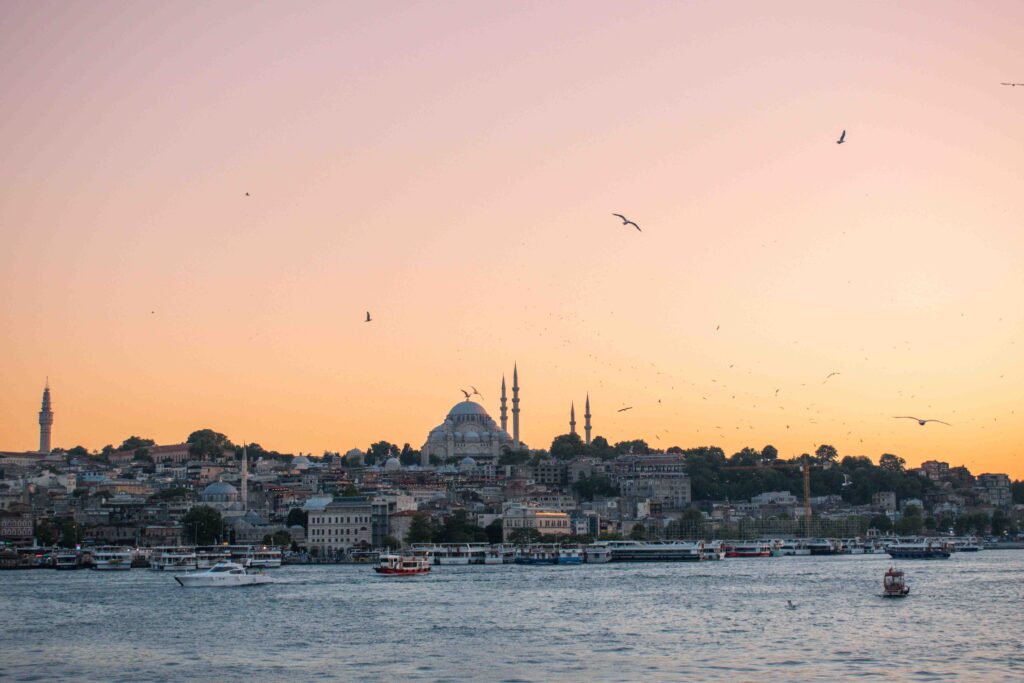
Read anything about Istanbul and you will find it awash with almost endless clichés. Where East meets West. A city of contrasts and contradictions. The modern and the ancient. Islamic and Christian. Mediterranean and Middle Eastern.
Usually, I try hard to get away from writing in phrases so often repeated that they cease to have much meaning. For me, the essence of slow travel is about getting beyond the top few highlights in the guidebook and exploring a little more of the “feel” of a place. This is very much the premise on which I started Faraway Dispatches.
But the problem with Istanbul is that all of the clichés are true. Around almost every corner you will find remnants of millennia of Roman, Byzantine and Ottoman history, sitting cheek to cheek with achingly hip bars and galleries showcasing some of the world’s most cutting edge modern art.
Ironically, I think it might be these very clichés that make Istanbul unique. As the only metropolis that straddles two continents, this blend of cultures, peoples and religions creates a fusion which is unique. And for as much as the East meets West identity is true – Istanbul is certainly a glorious mixture of European and Middle Eastern culture and influences – the European/Asian side distinction is a bit simplistic. Each of the city’s districts have their own, very distinct characters and vibes, regardless of which side of the Bosphorus they sit.
You could easily spend months in Istanbul, and only just start to scratch beneath the surface of the city’s endless layers. This guide is to get you started, knowing that sadly, most of us are constrained to a few days holiday when sampling a new destination. However long you visit, Istanbul is certain to leave you wanting more.
GETTING THERE
There are two airports serving Istanbul – Istanbul Airport (IST) on the European side, and Istanbul Airport (SAW) on the Asian side. The metro runs to both, and offers the quickest and cheapest route into the city. A taxi from the airport costs around 300TL, and takes about 45 mins to the Old City.
Of course, the absolute best way to travel to Istanbul would be aboard the Orient Express… a girl can but dream!
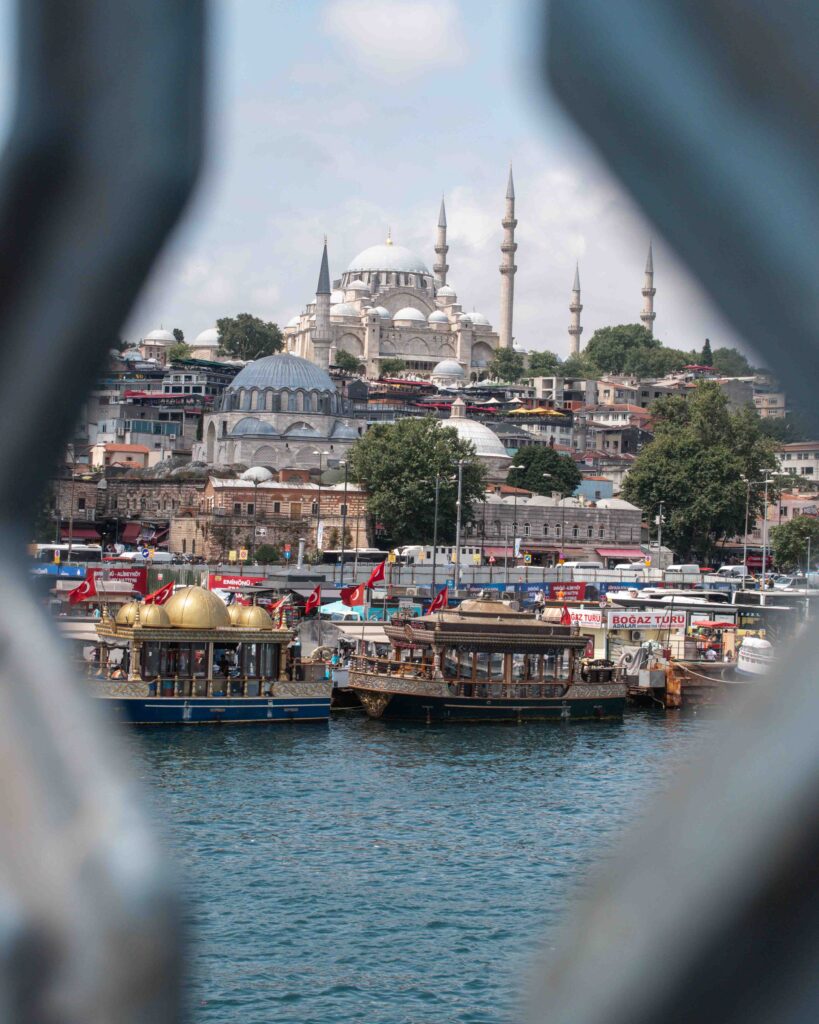
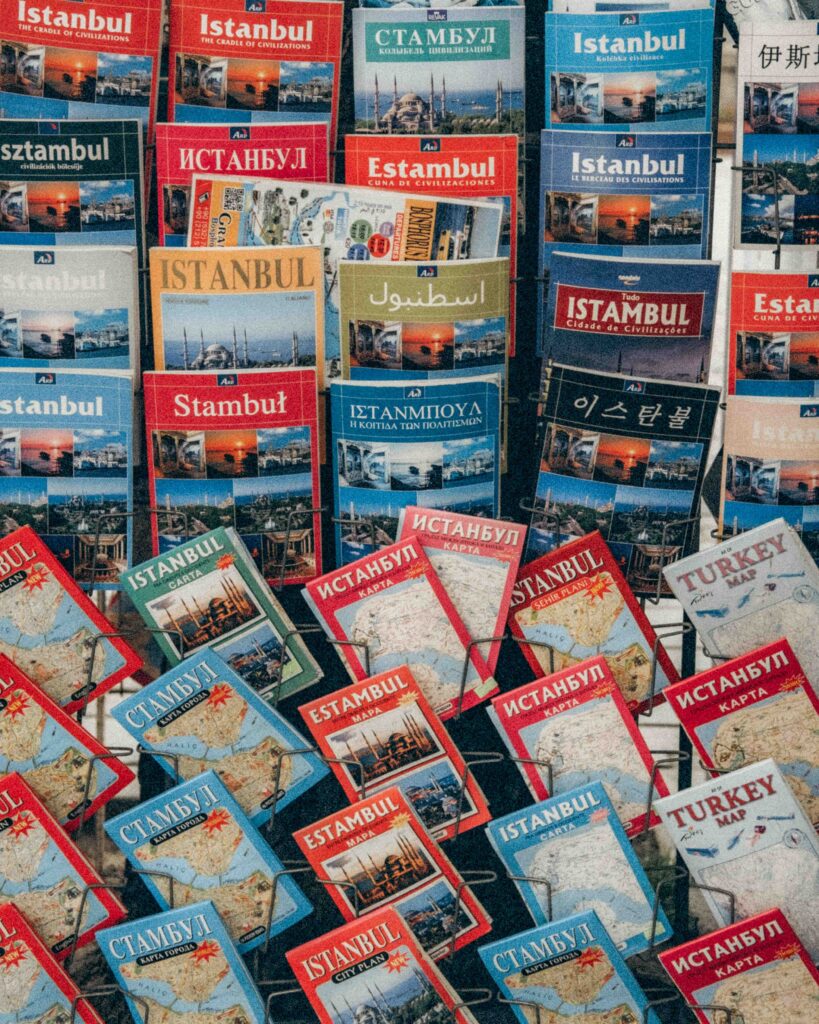
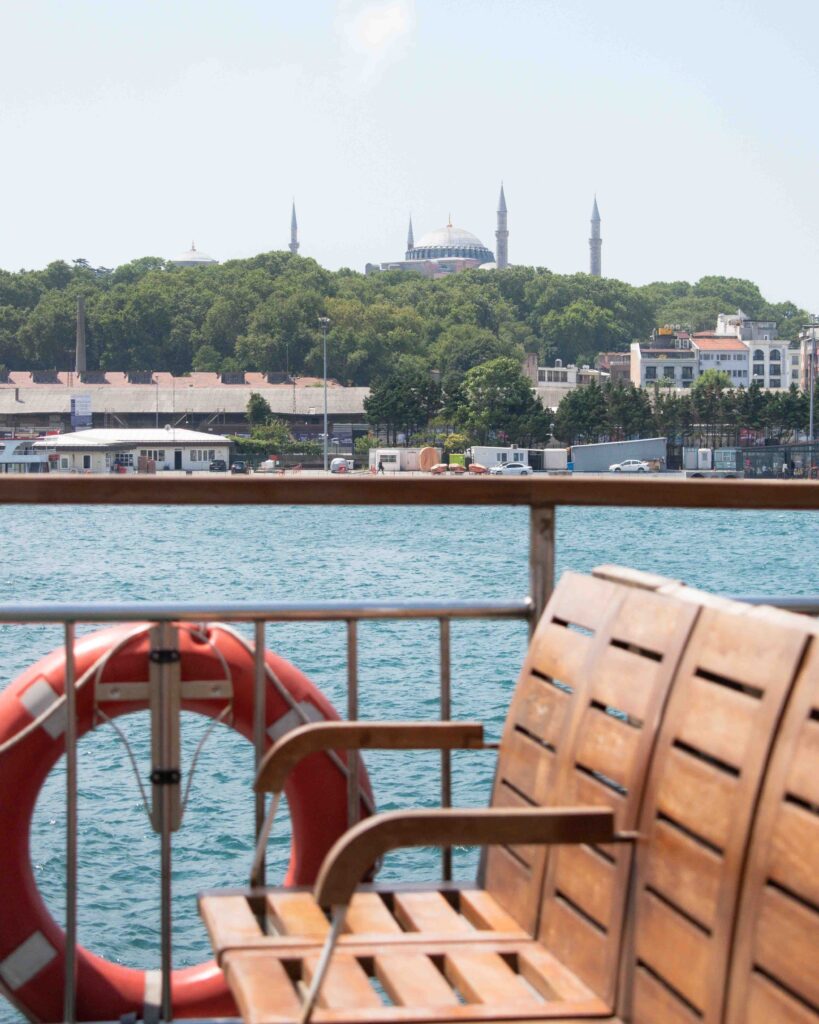
GETTING AROUND
For such a huge city, Istanbul’s most popular tourist sights are predominantly centred around the Sultanahmet and Fatih districts, and are actually very walkable. But the rest of Istanbul is simply vast, and you will want to rely on the excellent public transport system to get about. If you have several days in Istanbul, consider getting an Istanbulkart, which gets you nearly 50% off ferry, tram, metro and bus journeys. The rechargeable card works similar to London’s Oyster card system. You can pick them up at kiosks in metro, ferry and funicular stations for 50TL.
ISTANBUL’S NEIGHBOURHOODS
Each of Istanbul’s many districts have their own distinct culture and vibe. Simply strolling through the city, stopping here and there for a Turkish coffee or a çay, is a wonderful way to get a sense of the diversity and layers of Istanbul. Here are few of my favourites, that showcase the variety and multidimensional nature of this city.
Sultanahmet – the main tourist destination, home to Istanbul’s most well known historic sights, with landmarks like the Hagia Sophia and Topkapi Palace.
Taksim Square – more modern, residential area awash with bars and cafes, this is the commercial heart of Istanbul. The main pedestrian boulevard – Istiklal Caddesi – starts in the famous Taksim Square.
Ortaköy – the perfect place for a river-side stroll, and a top pick for leisurely weekend brunching on a vast traditional Turkish breakfast.
Beyoğlu – good food, live-music and boutique hotels in this hip residential neighbourhood. Also known as Pera, “the other side”.
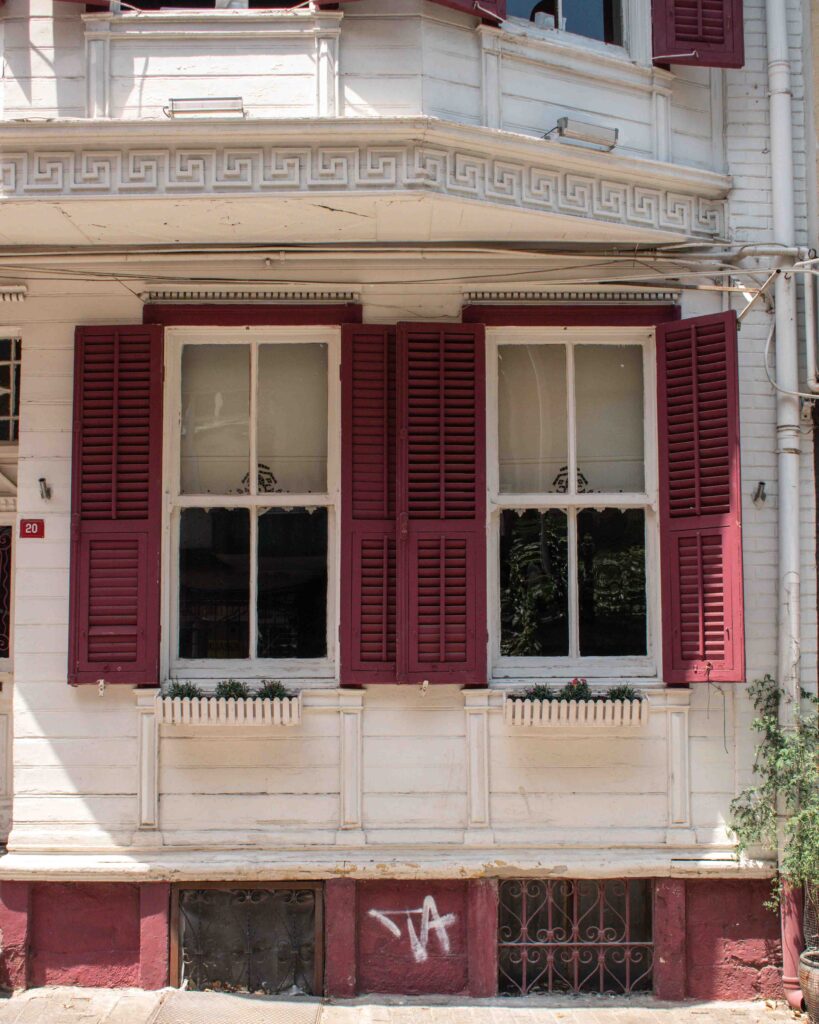
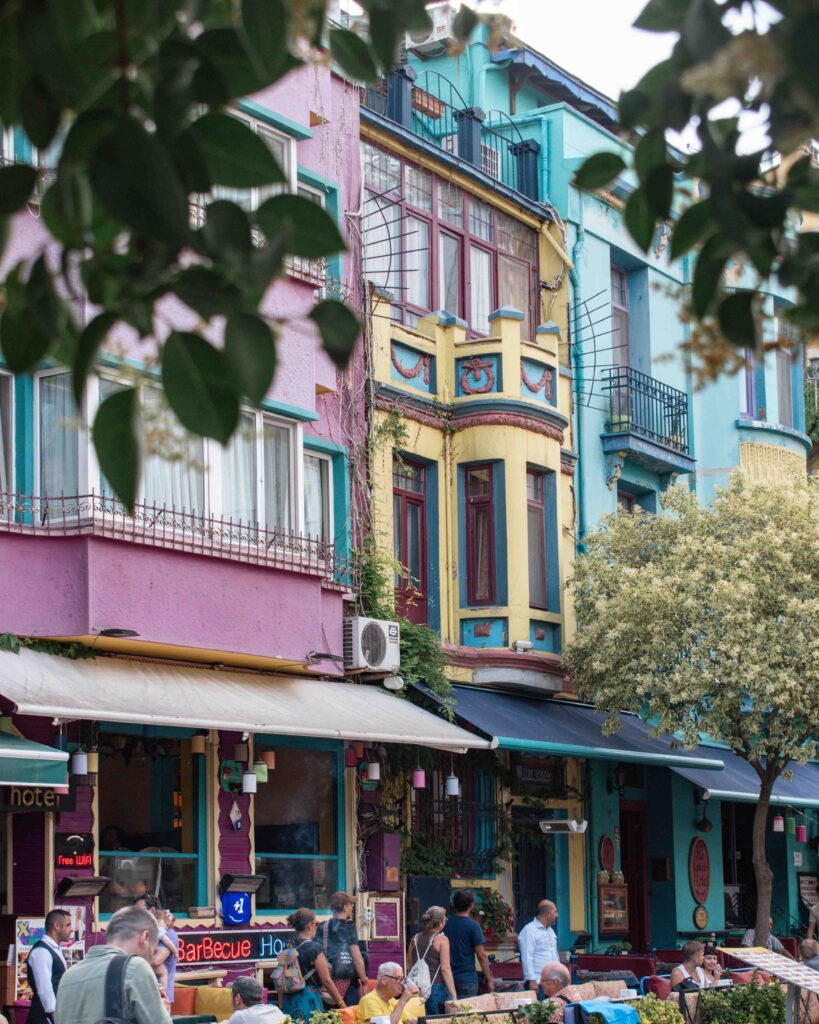
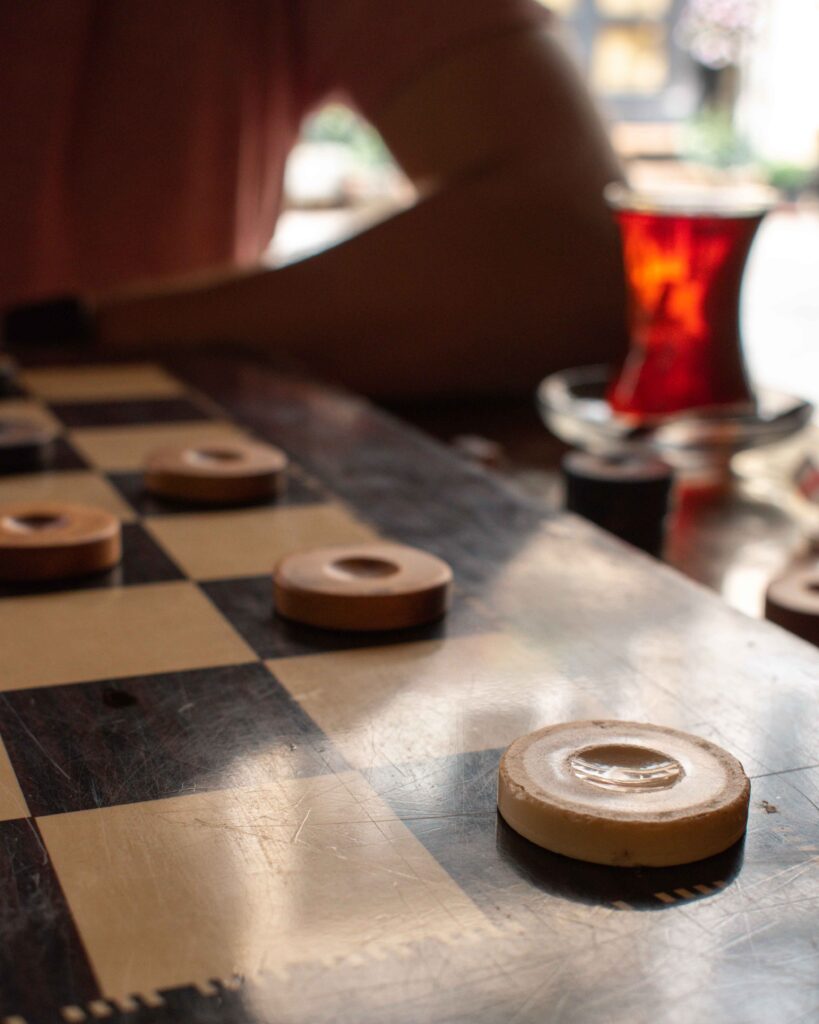
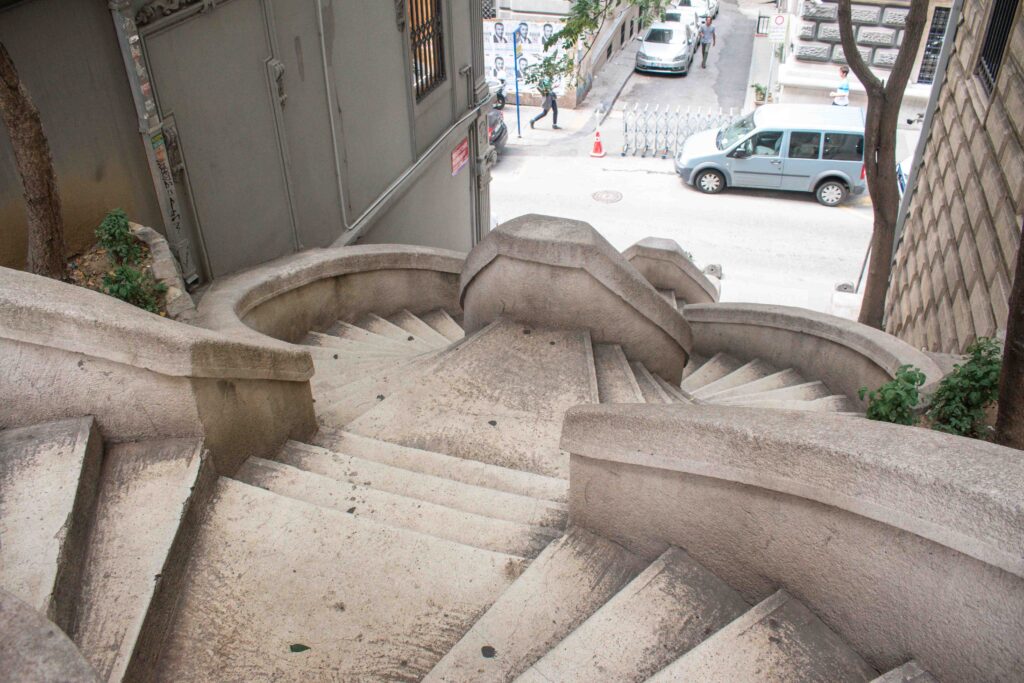
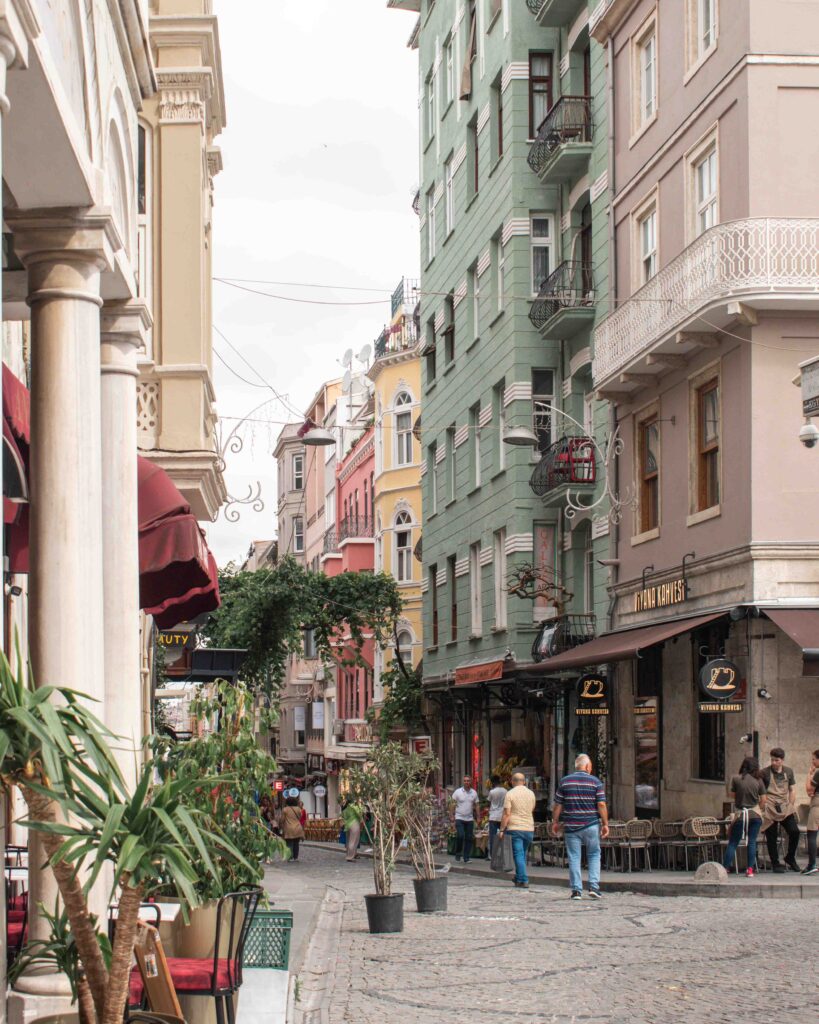
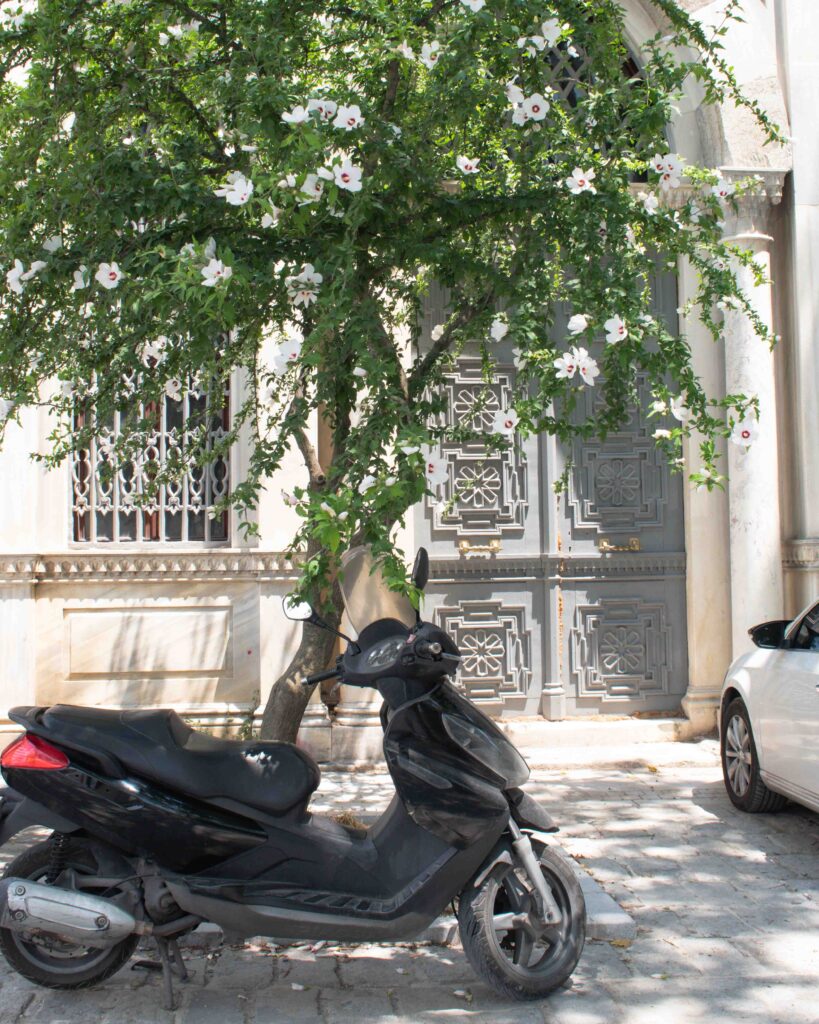
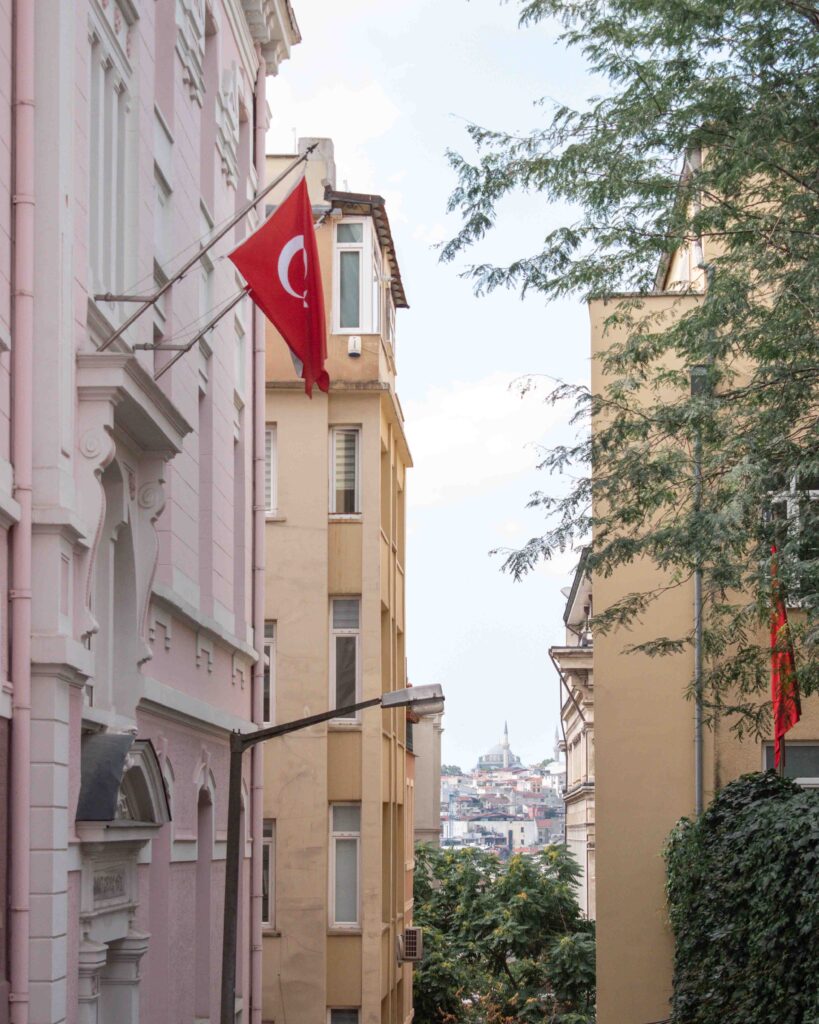
Karaköy – once an industrial centre, now home to edgy bars and quirky independent shops. Find the much-photographed Galata Tower here.
Arnavutköy – if nightlife is your thing, this is the district for you. Many of Istanbul’s top nightclubs and bars are centred here.
Balat – Instagram famous, with rows of colourful houses. Historically the centre of the Greek Orthodox and Armenian populations.
Kadiköy – relaxed residential district on the Asian side of the river. A popular fish market and a wealth of fruit and vegetables to choose from. Enjoy a few hours soaking up the café culture and street art.
WHAT TO SEE
Hagia Sophia – Ayasofya-i Kebir Cami-i Şerifi – once the largest church in the world, then a mosque before becoming a museum… and now back to a mosque. Built between 532 and 537, Hagia Sophia was the main church of the capital of the Byzantine Empire, and became a mosque after the Ottoman Empire conquered Constantinople in 1453. Unusually, when it was converted to a mosque many of the symbols of Christianity were not removed but instead covered with Islamic designs and calligraphy. Between 1935 and 2020, Hagia Sophia was a museum, before being redesignated as a mosque by the Erdogan government.
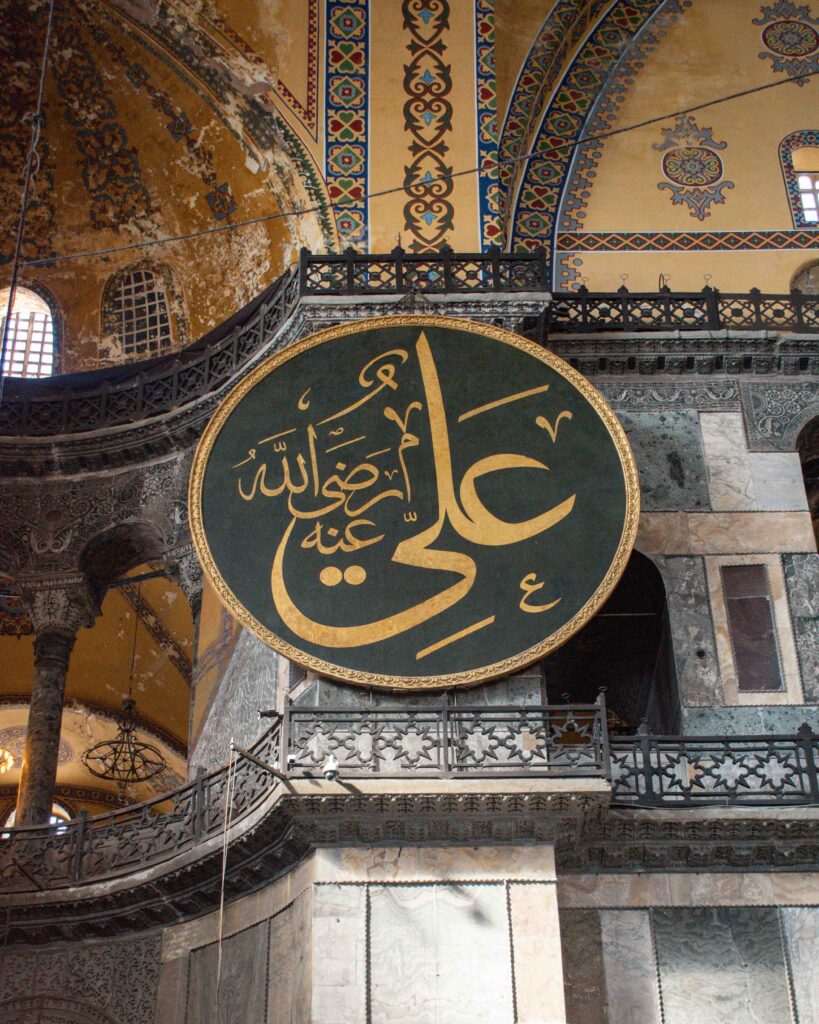
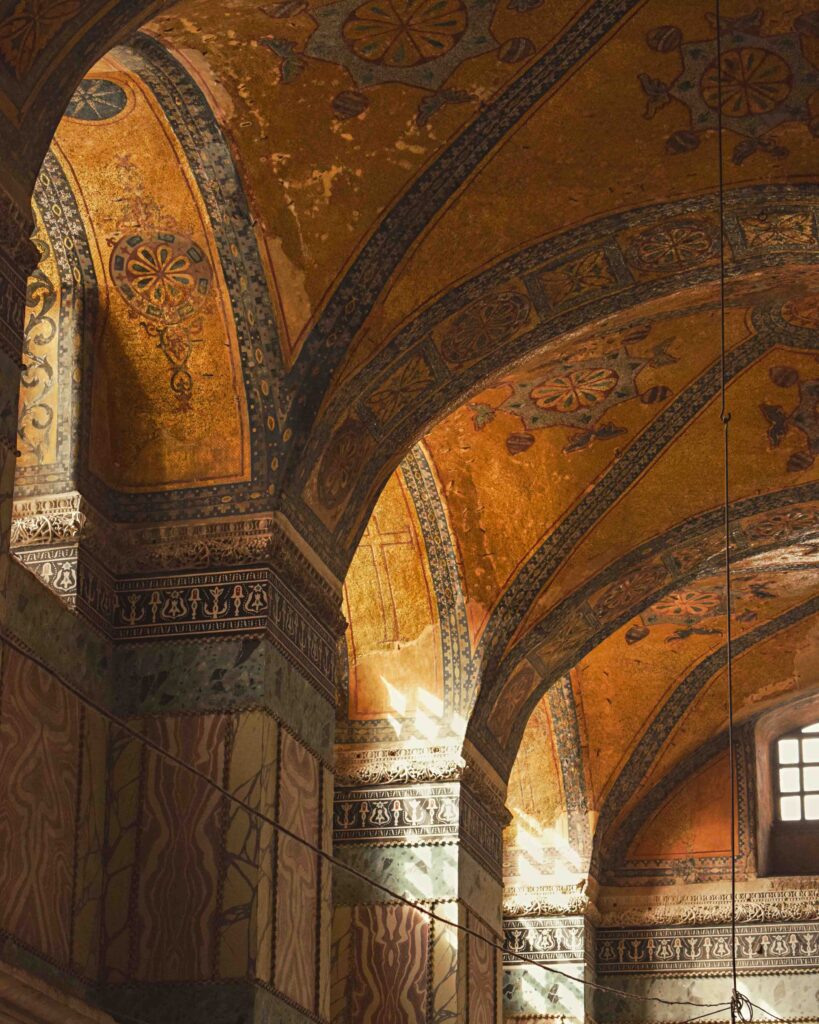
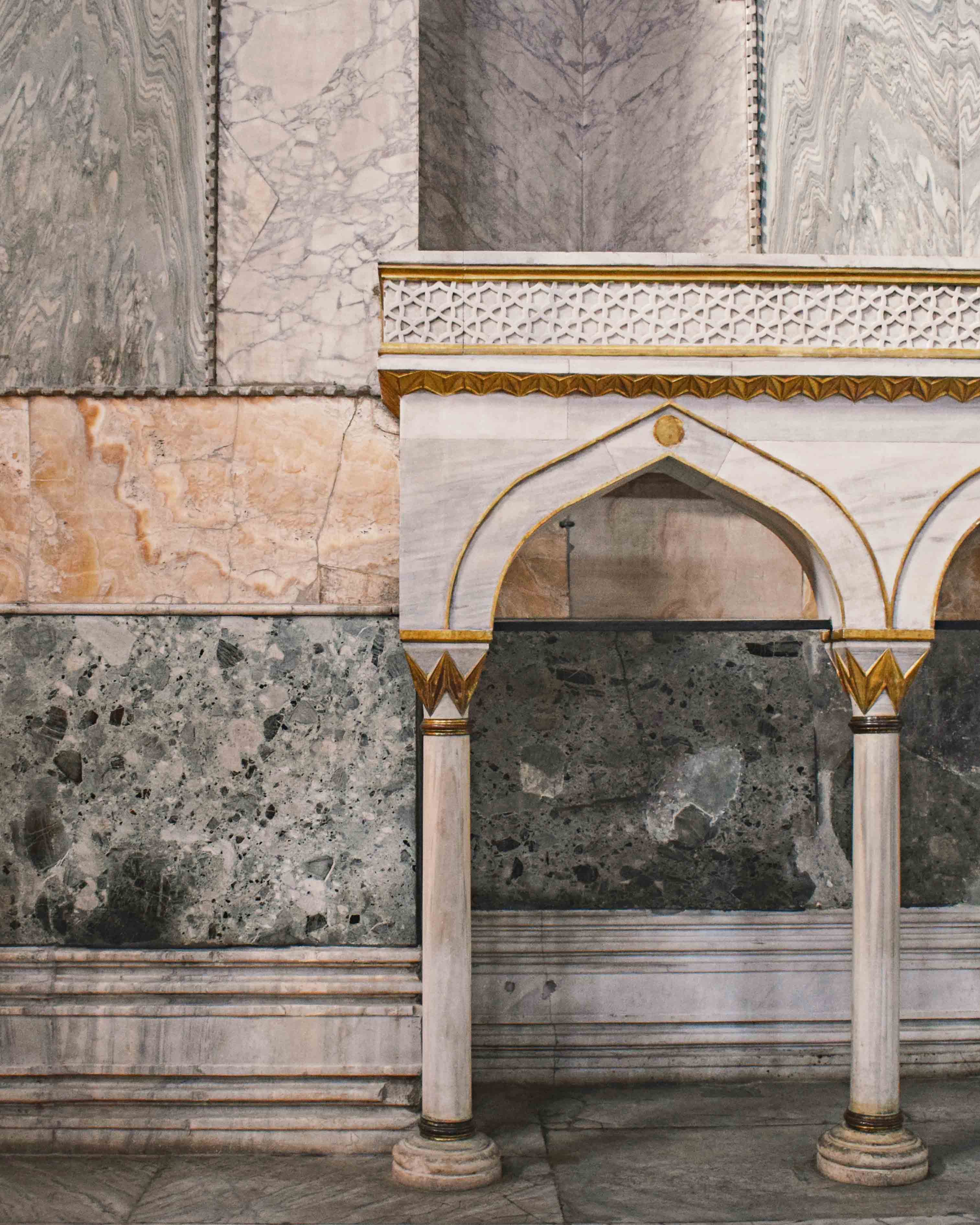
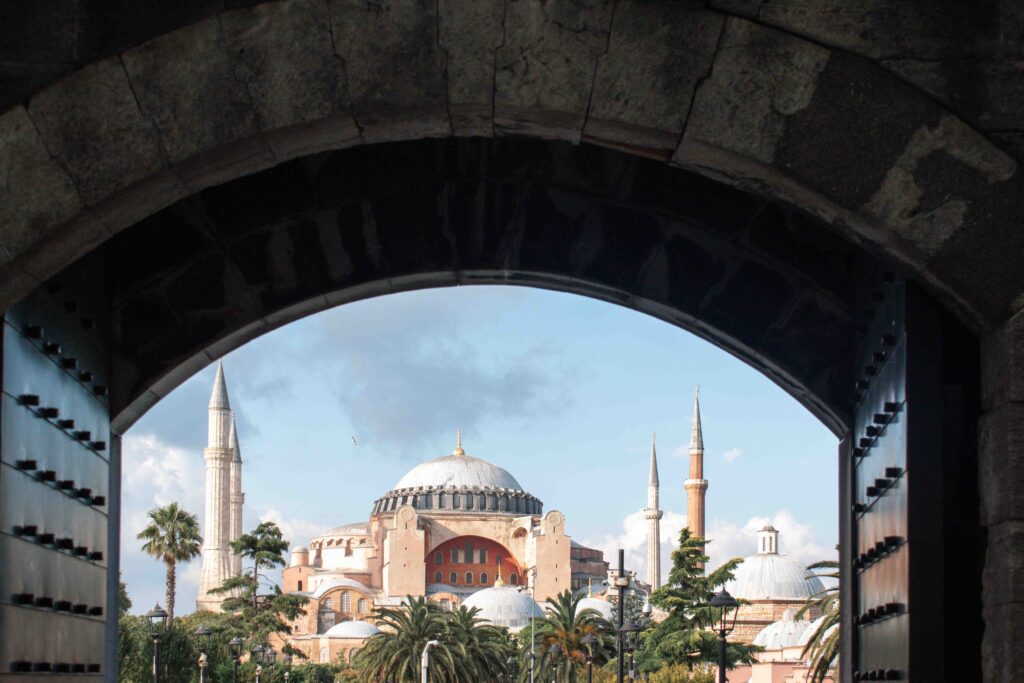
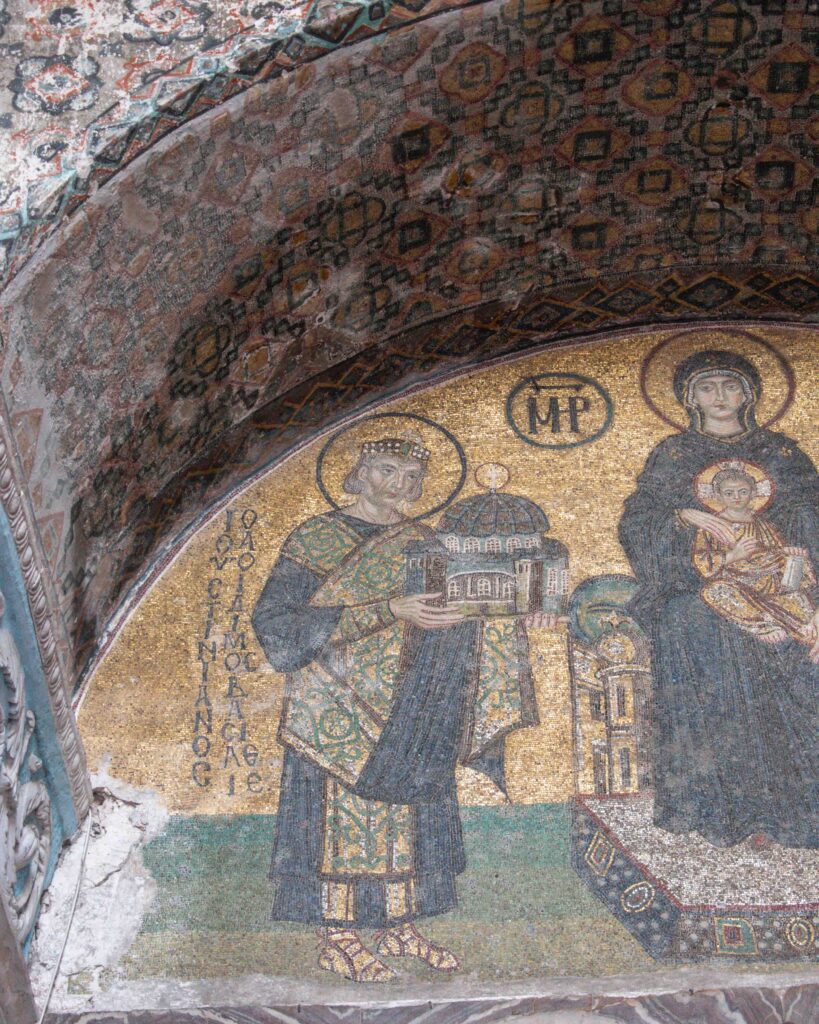
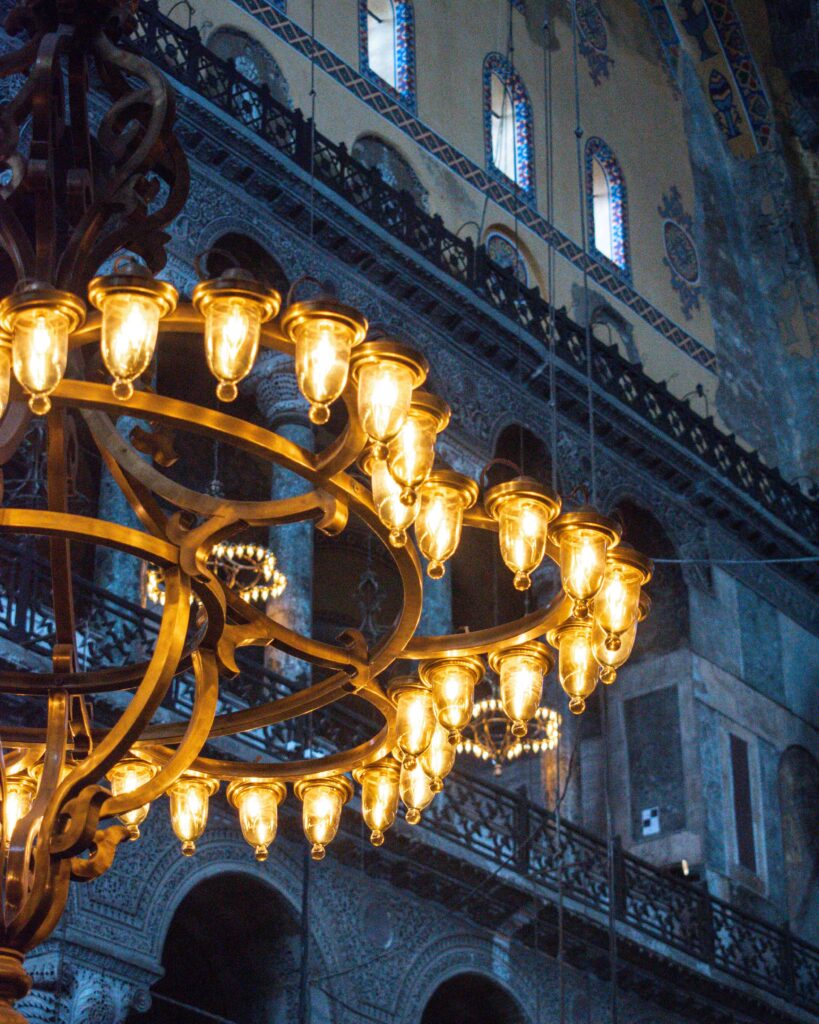
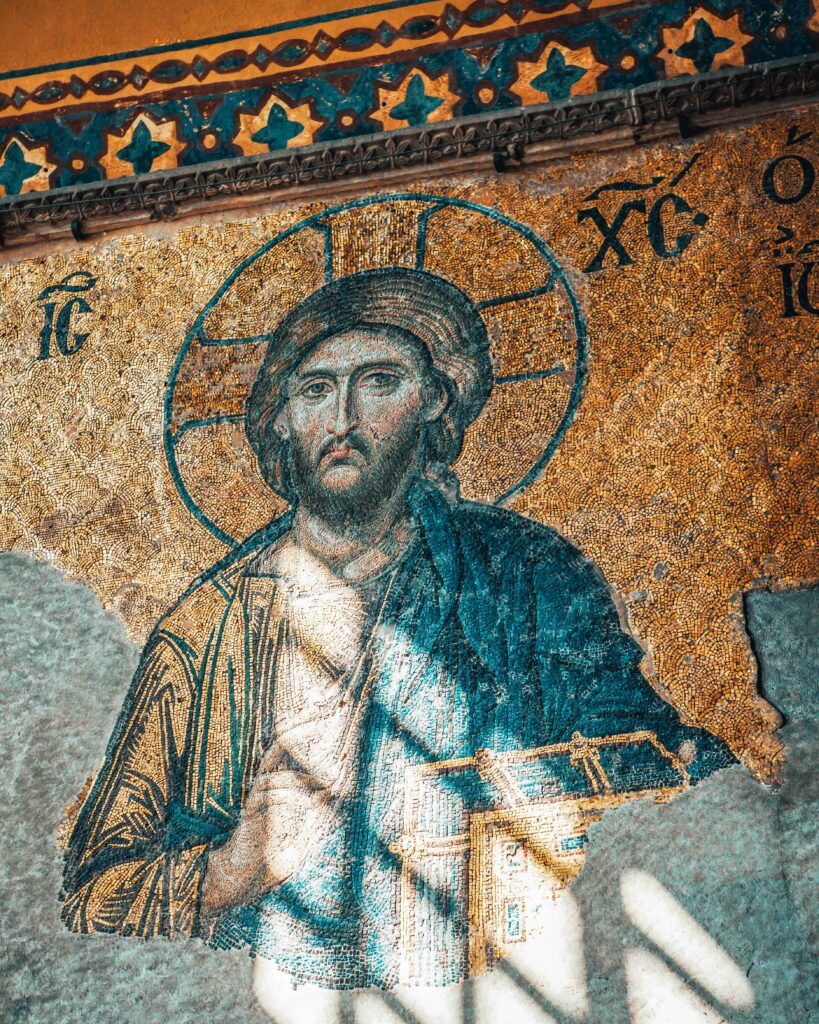
Hagia Sophia is open daily. Since January 2023, Hagia Sophia no longer closes during prayers. Entrance is free. As an active mosque, modest dress is required and women must cover their hair. Instead, there are barriers separating the prayer section, and if you visit during prayers, you cannot cross these barriers. Check prayer times here. As the premier tourist site in Istanbul, it gets incredibly busy. Get there fifteen minutes before it opens, of the last hour of the day for shorter waits.
Basilica Cistern – Yerebatan Sarnıcı – the largest of a network of ancient cisterns underneath İstanbul. Built in 532AD to hold the ancient Byzantine city’s water supply, the cistern is 139 metres long, and capable of holding 80,000 cubic metres of water. Open 9am to 10pm, tickets cost 350 TL.
Blue Mosque – Sultan Ahmet Camii – Sultanahmet Mosque, also known as the Blue Mosque, was built on the foundations of the Great Palace of the Byzantine emperors to rival the grandeur of Hagia Sofia. It gets its name from the blue tiles that adorn the domed ceiling, lit by massive hanging chandeliers. Visiting is free, between 9am and 5pm, except for prayer times. Check prayer times here.
Topkapı Palace – Topkapı Sarayı – built between 1460 and 1478 by Sultan Mehmed II, this huge complex on a hill above the Bosphorus was the residence of the Sultans of the Ottoman Empire. The Sultan lived here right up to the 1850s, when they moved to the Dolmabahçe Palace down the river.
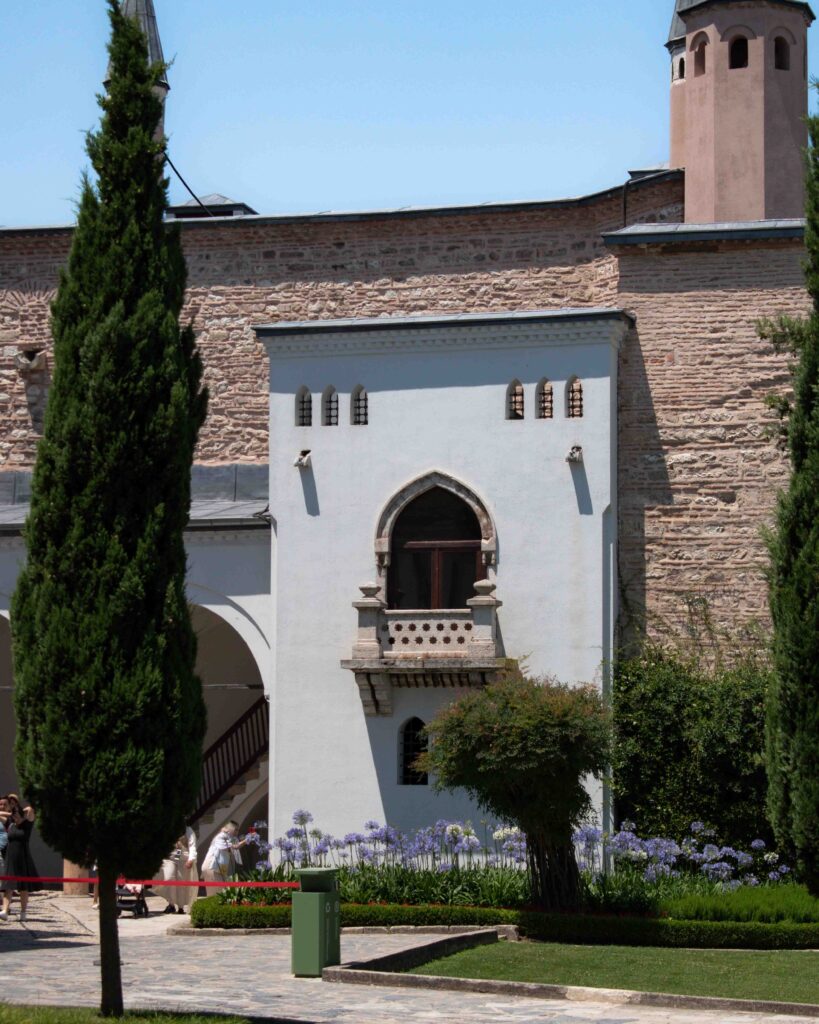
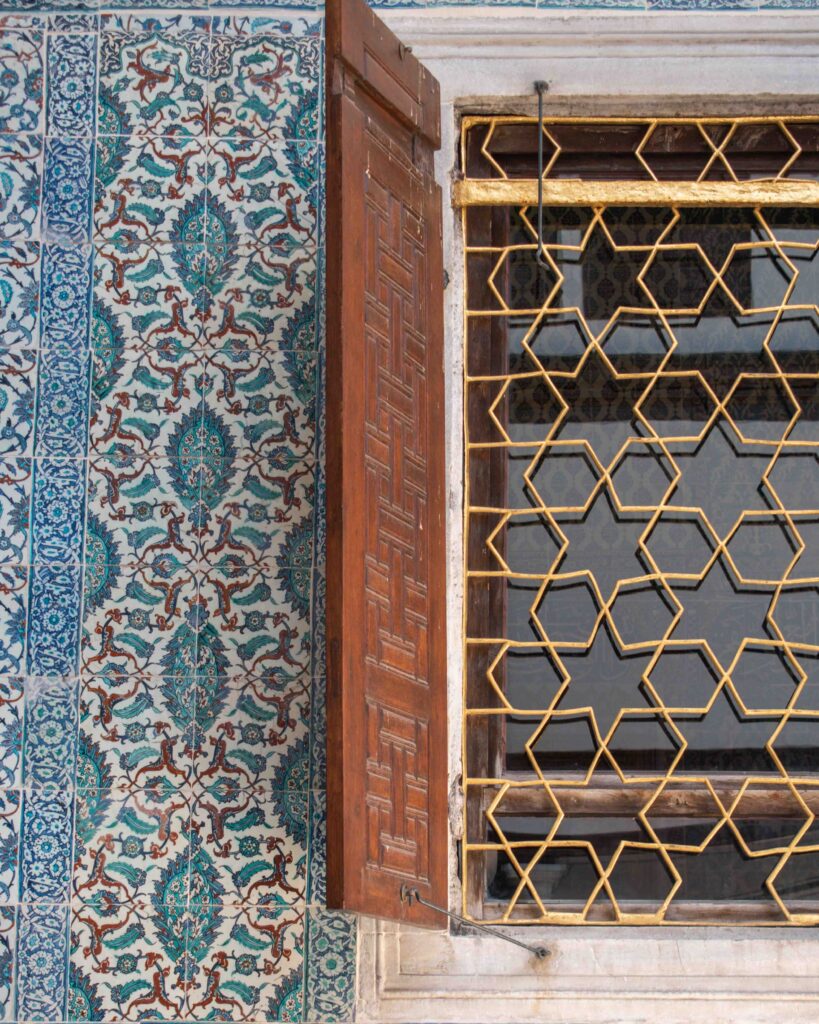
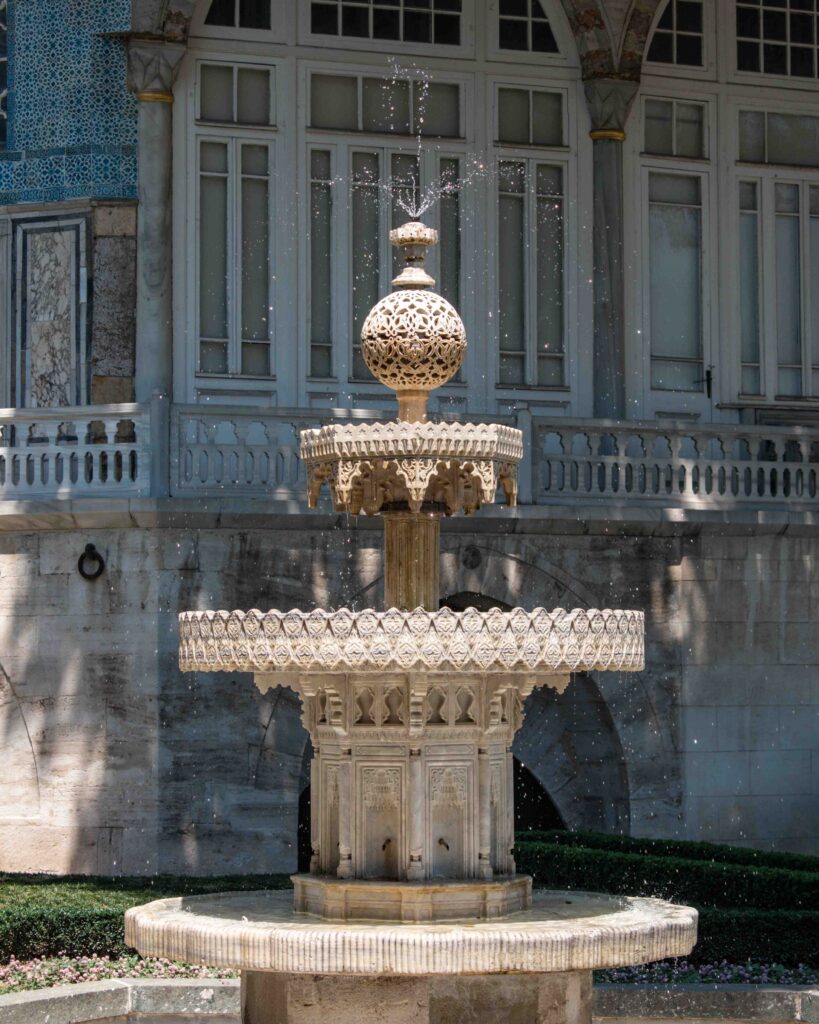
There are two ticket options – including or excluding the harem. Meaning “forbidden”, the harem was the private residence of the Sultan and his family. Every detail of Harem life was governed by tradition and ceremony. The sultans supported as many as 300 concubines in the harem, although numbers were usually lower than this. Upon entering the Harem, the girls would be schooled in Islam and in Turkish culture and language, as well as the arts of make-up, dress, comportment, music, reading, writing, embroidery and dancing. They then entered a meritocracy, first as ladies-in-waiting to the sultan’s concubines and children, then to the valide sultan and finally – if they were particularly attractive and talented – to the sultan himself.
I’d highly recommend visiting the harem as the beautiful tiled interiors were the absolute highlight for me. Give yourself a good couple of hours to explore the complex without feeling rushed.
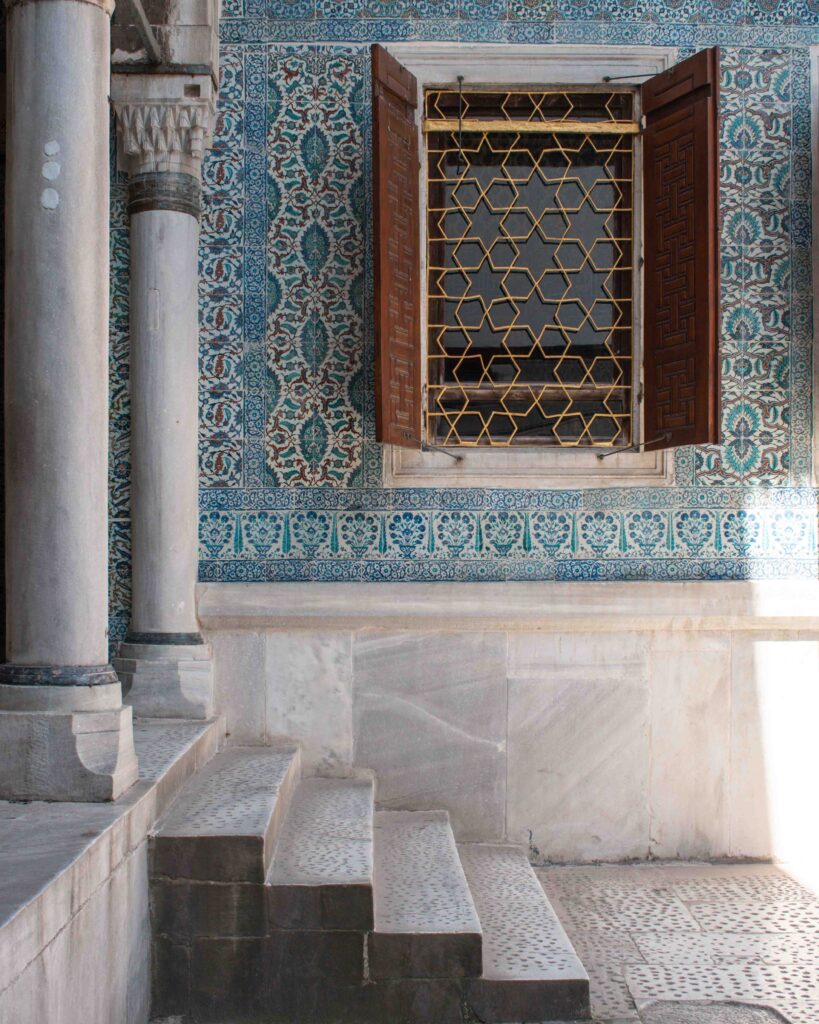
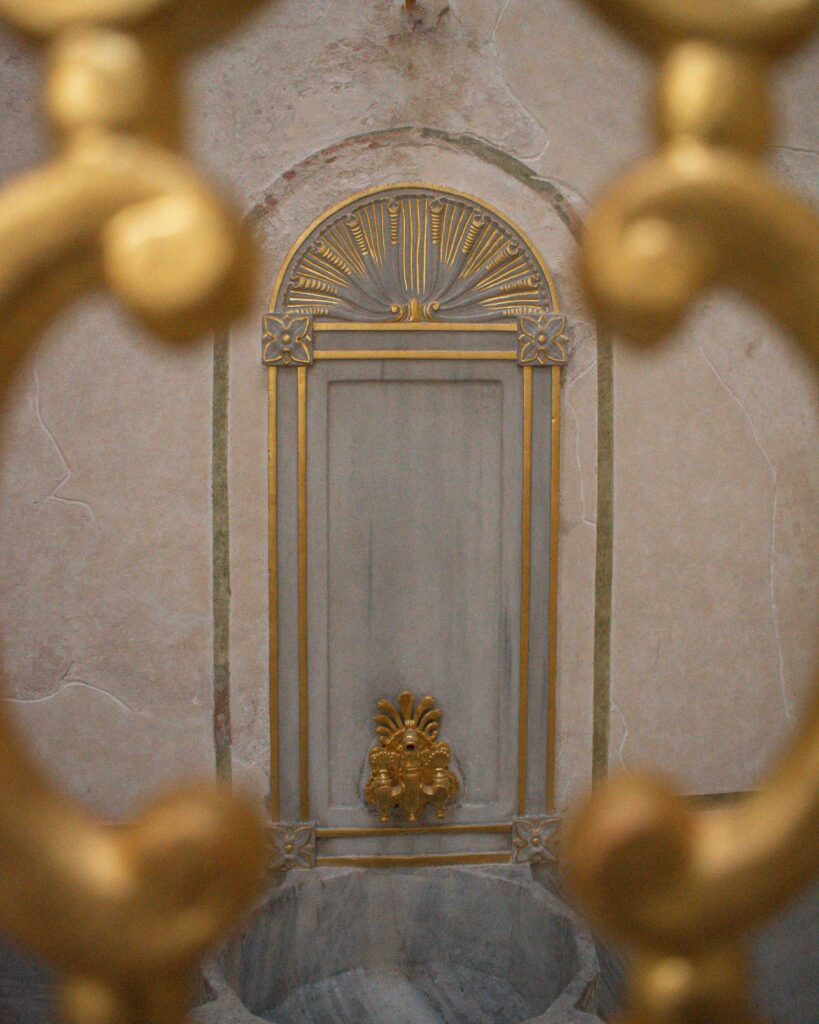
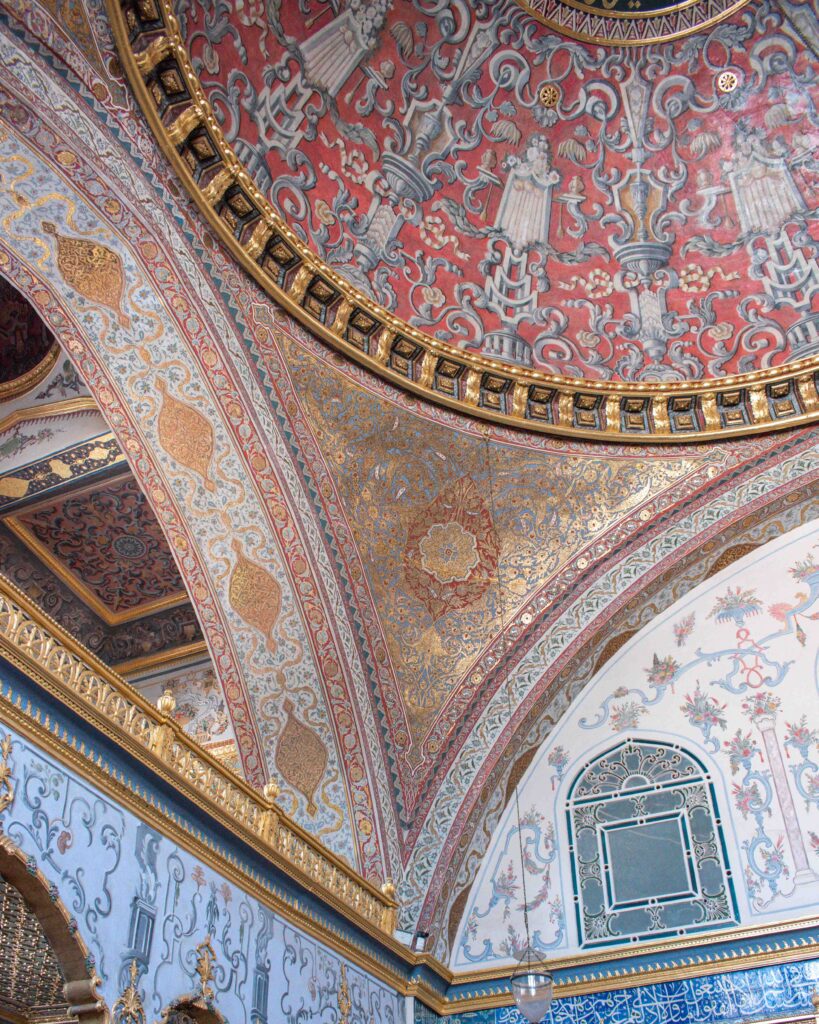
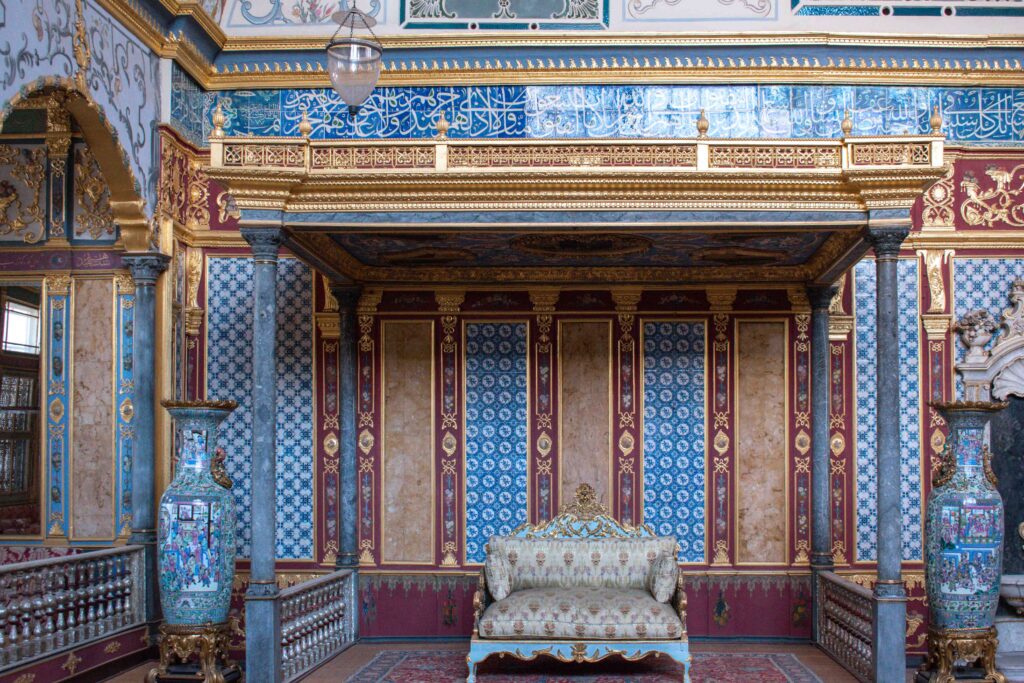
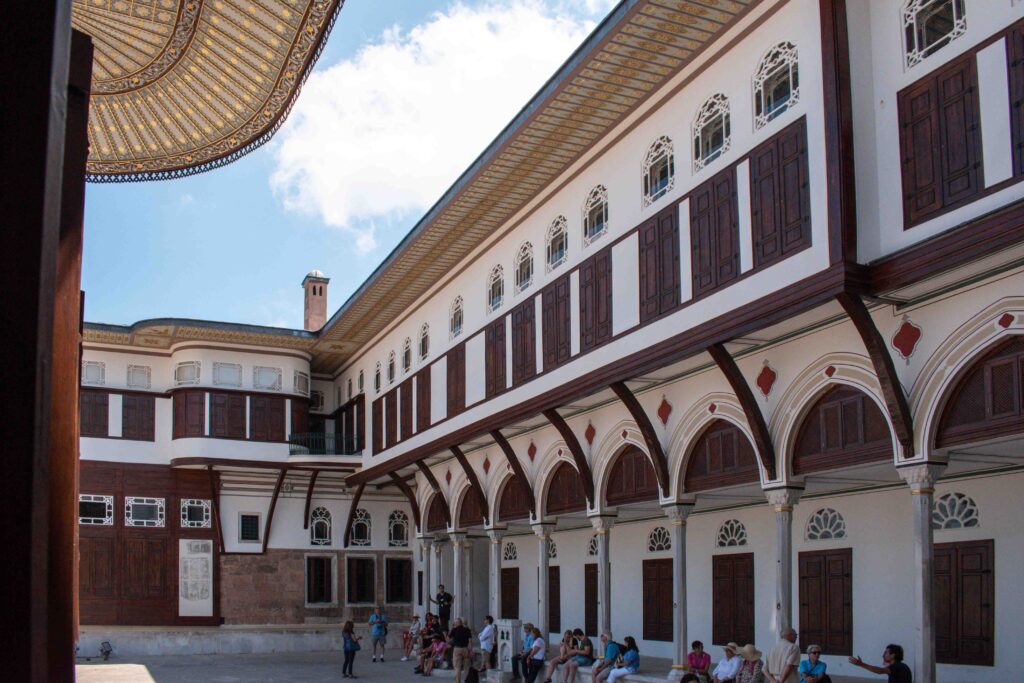
Also worth making a beeline for, are the Sacred Safekeeping Rooms. These rooms, sumptuously decorated with İznik tiles, house relics of the Prophet Mohammed, brought from Medina in the early 16thC by Selim I. Among those relics are the mantle of the Prophet, his swords and his foot print. Shorts, mini-skirts, tank tops or strapless clothing are not permitted when viewing the relics.
Topkapı is open 9am to 6pm. Topkapı Palace, the Harem and Hagia Irene costs 650 TL. Topkapı Palace and Hagia Irene costs 500 TL. Children younger than 6 enter free. Entrance is free for disabled visitors and one companion. An audio guide is included with the tickets.
Istanbul Archaeological Museum – made up of three sections, the Archaeological Museum, the Museum of the Ancient Orient, and the Tiled Kiosk Museum. The neoclassical Archaeological Museum has almost endless Greek and Roman statues, and sarcophagi from Syria, Lebanon and Ephesus. The Museum of the Ancient Orient holds Babylonian and Assyrian reliefs, and many pre-Islamic items from the Ottoman Empire. The 14-marble column portico covered in blue tiles at the entrance to the Tiled Kiosk Museum is a highlight. Open 9am to 6.30pm (until 8pm 1 April – 31 October) and tickets cost 200 TL.
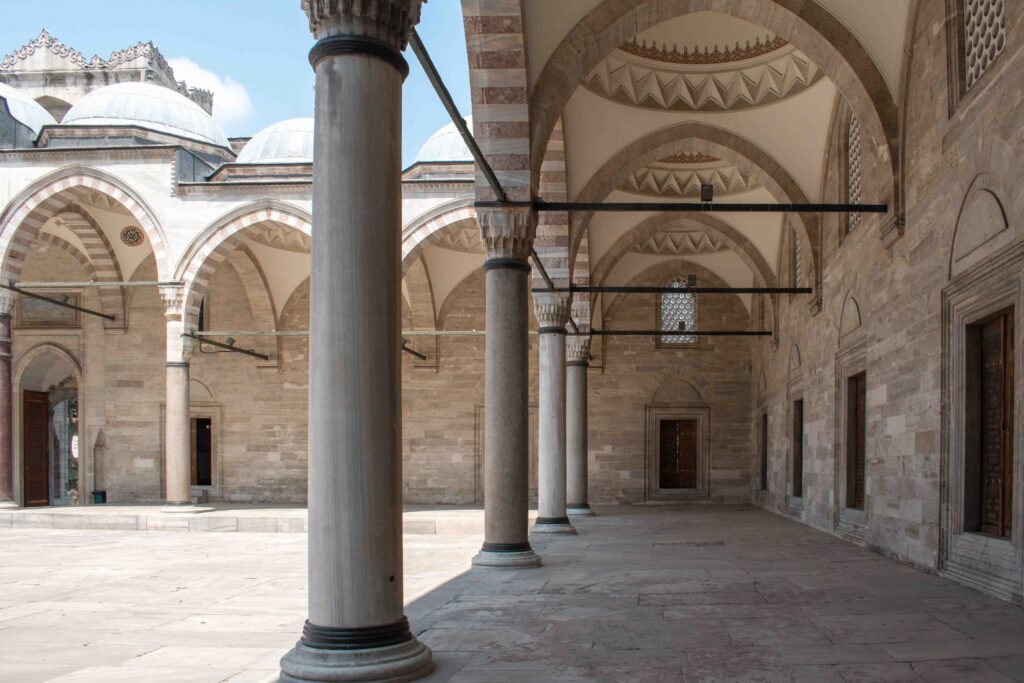
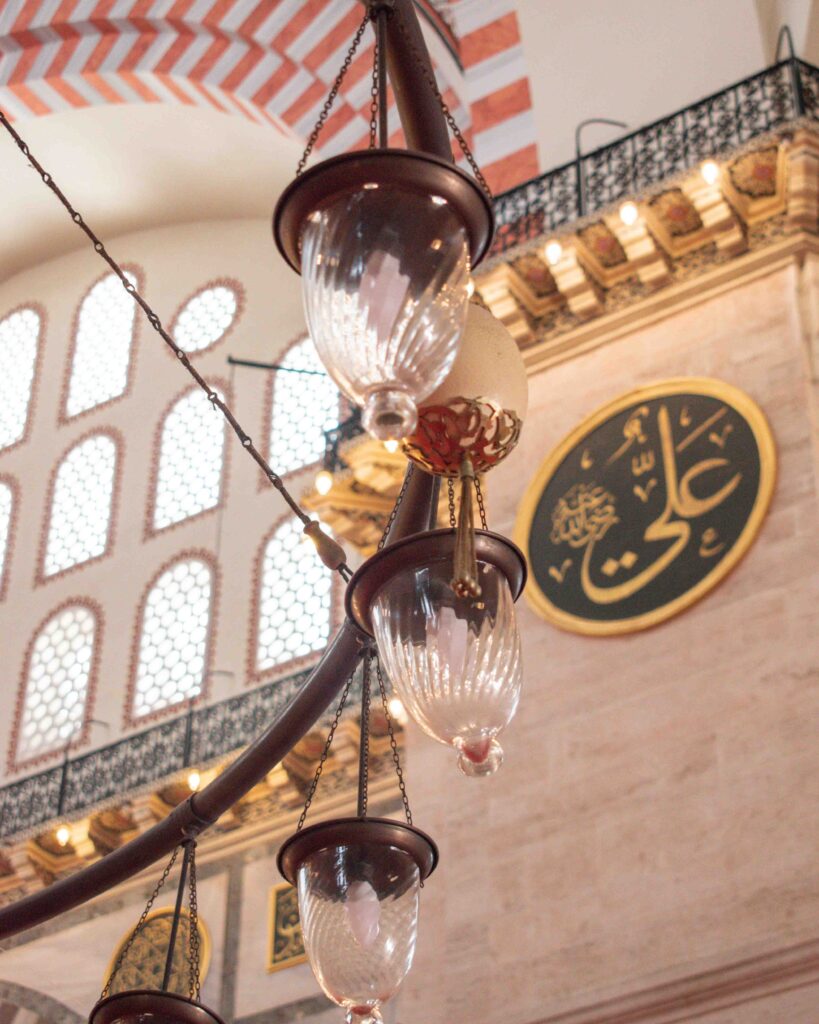
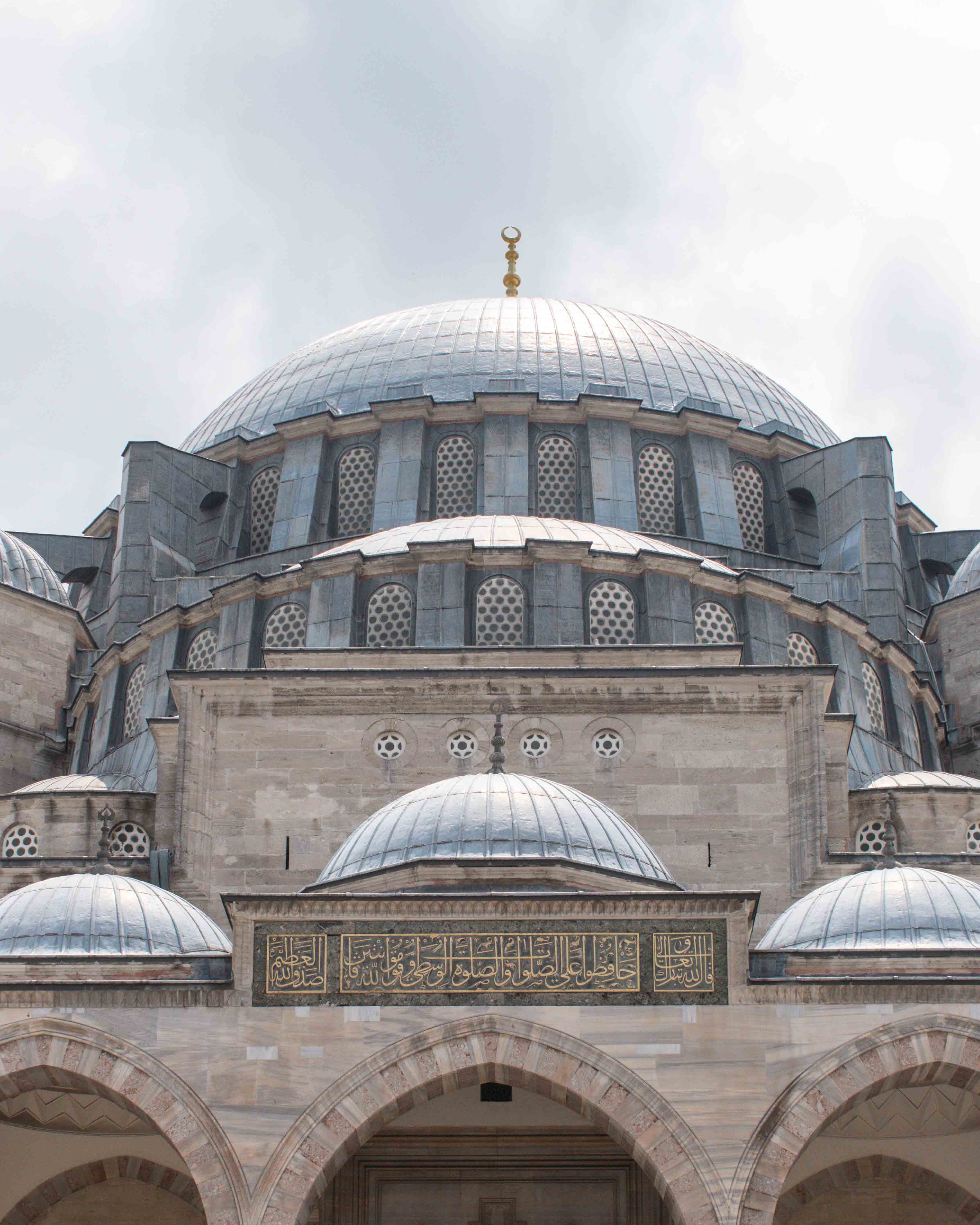
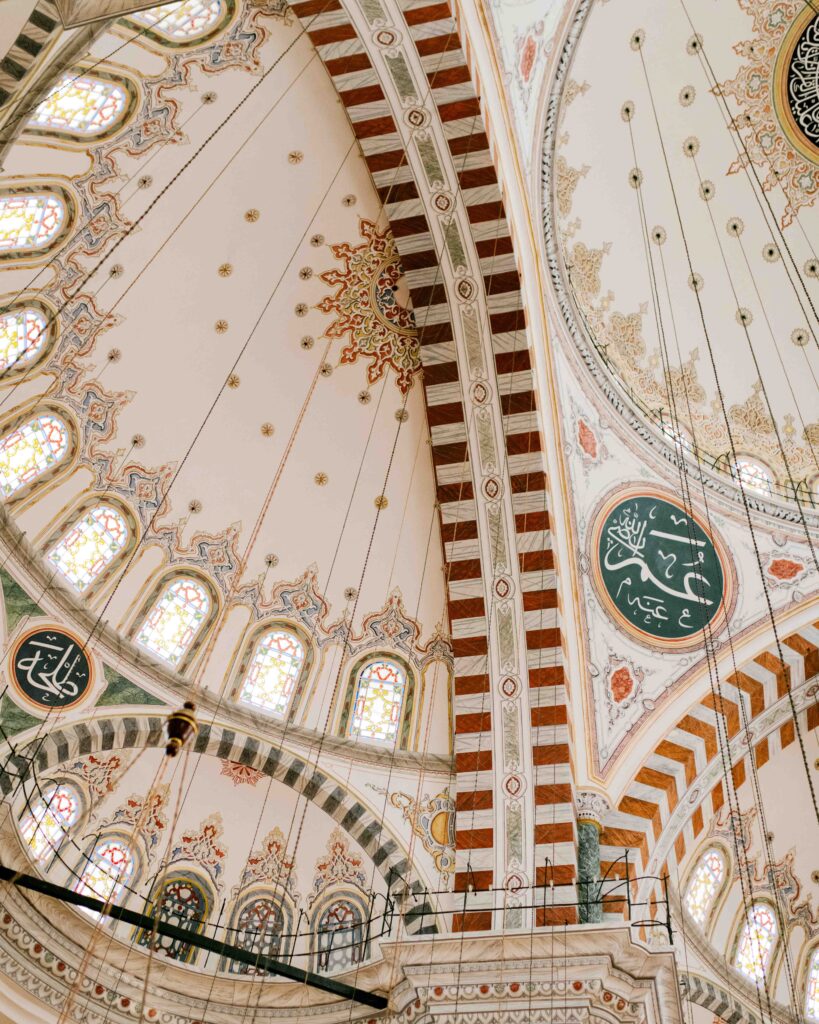
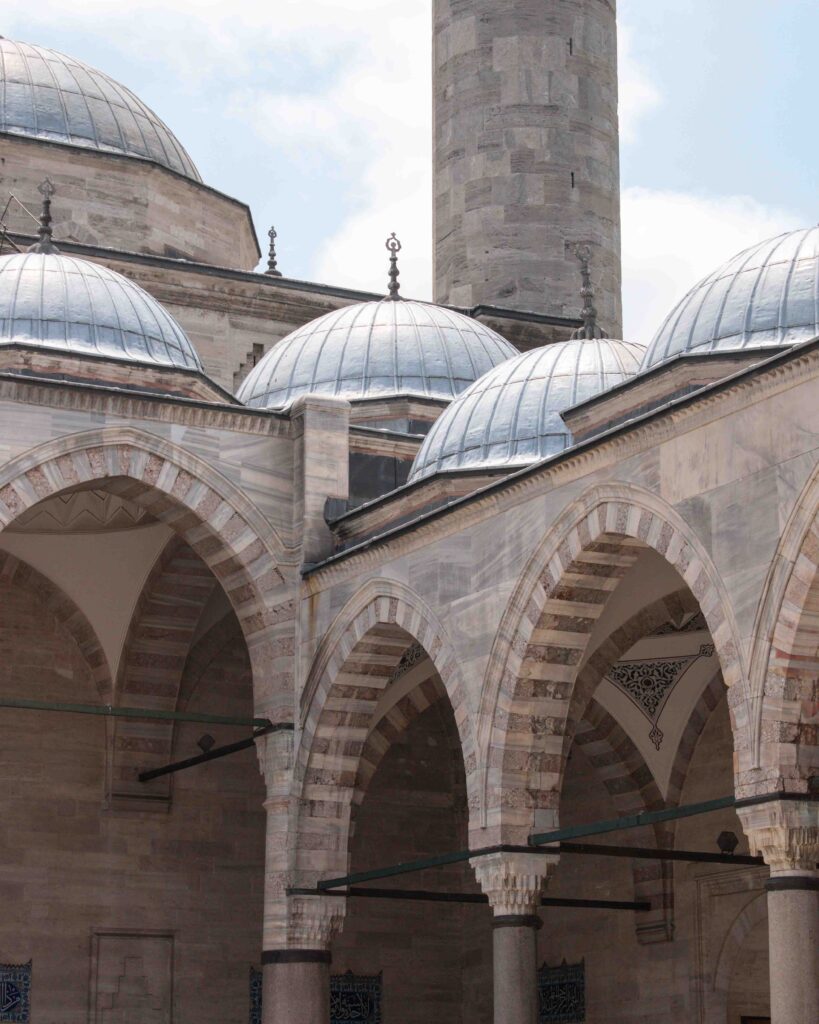
Süleymaniye Mosque – Süleymaniye Camii – of all Istanbul’s mosques, I think Süleymaniye is the most beautiful. Located on top of one of Istanbul’s seven hills, the mosque dominates Istanbul’s skyline. Built between 1550 and 1557, it was commissioned by Süleyman I ‘the Magnificent’ at the heigh of Ottoman power. It was the largest mosque in İstanbul for over 460 years. Visiting is free, between 9am and 5pm, except for prayer times. Check prayer times here.
The Cats! – all of the beautiful sights above could be the reason I love Istanbul so much… but I should probably come clean. It’s the cats. This glorious city is absolutely awash with my beloved feline friends! It is not known where Istanbul’s cat population first originated, but they have been a feature of Istanbul since at least the Ottoman period. Wherever they came from, they are now as much a part of this city’s identity as the Hagia Sophia or the Bosphorus. Residents have built little cat houses and leave out food and water for their furry neighbours.
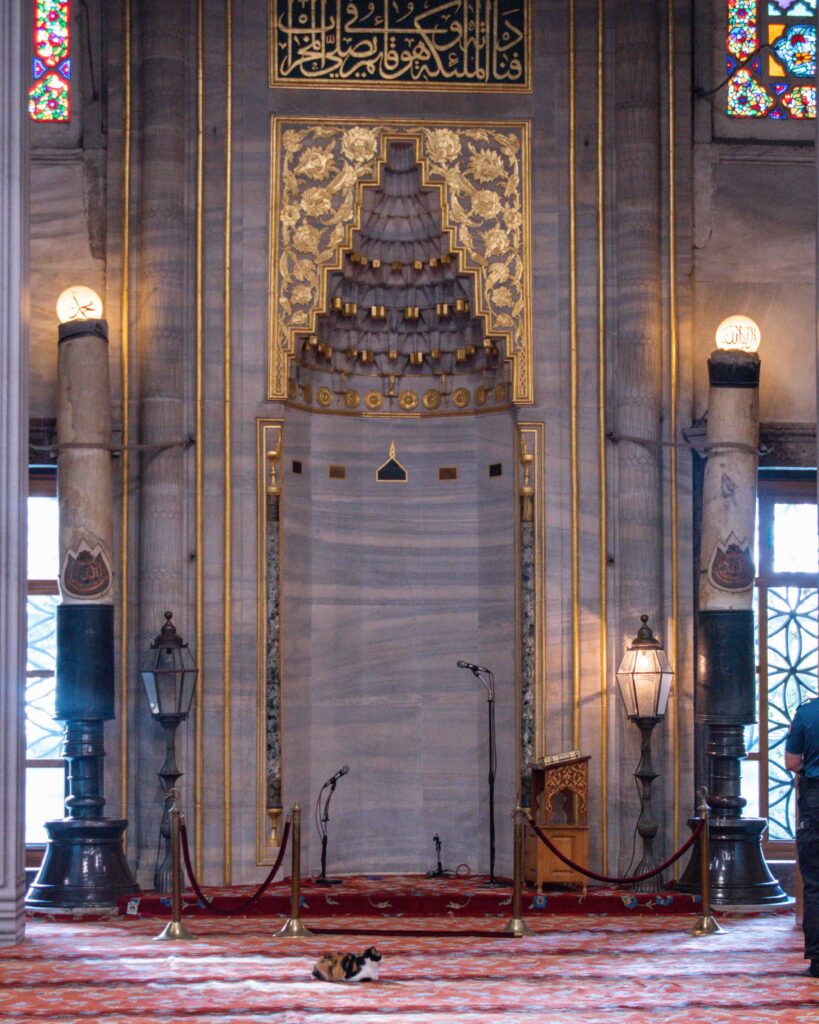
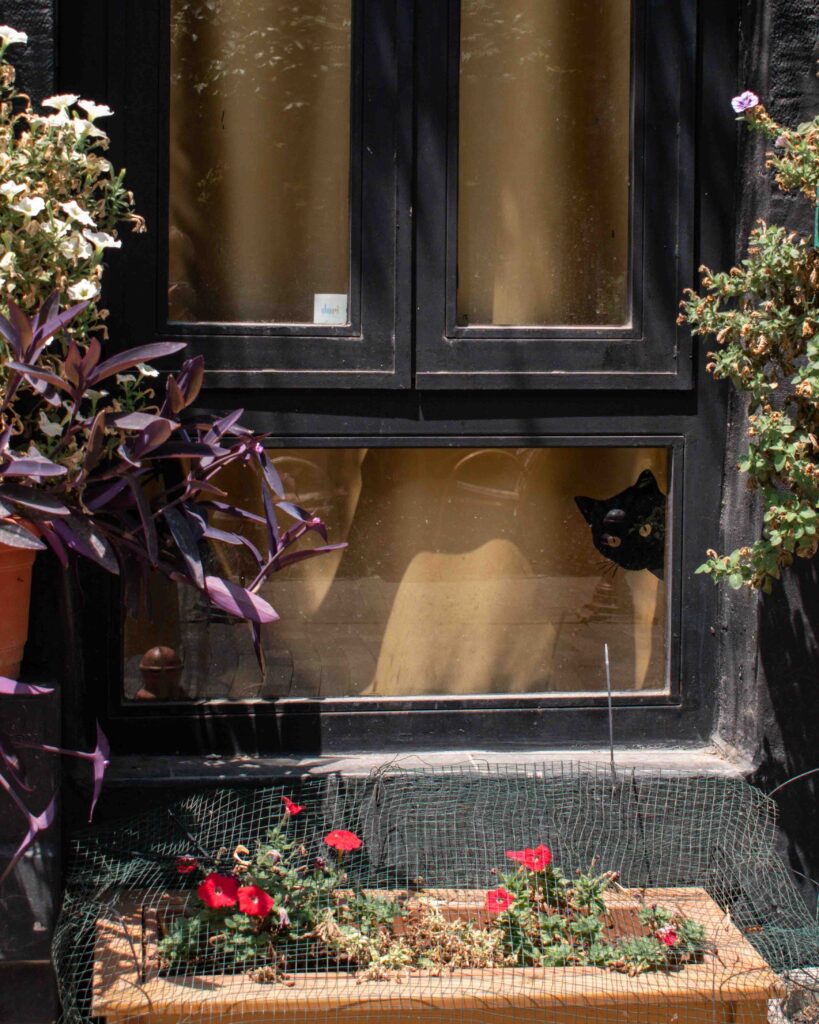
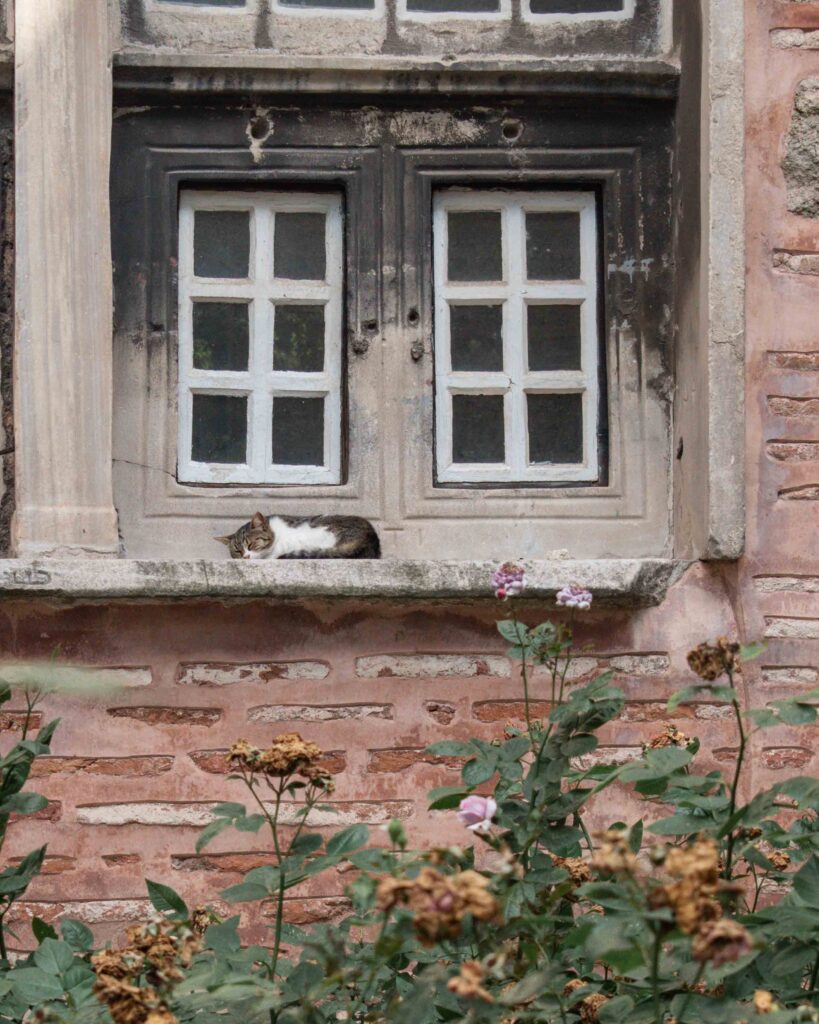
WHAT TO DO
Get the ferry across the river – there are many cruises offered along the Bosphorus, but I actually recommend getting the public ferry instead. You get the same views for a fraction of the cost, and get to soak up a little of the local life alongside the city’s residents going about their (rather lovely!) daily commute.
Climb Galata Tower – Galata Kulesi – originally built as a watchtower within the Walls of Galata. Nine floors high, you can get a lift to the top to enjoy views right out across the city over the minarets on the European side of the Bosphorus. Open 8.30am-10pm, tickets cost 350 TL.
Stroll around the Grand Bazaar – Kapalı Çarşı – even if you are not interested in the fairly touristy shopping fare, the Grand Bazaar is more than worth a visit simply to walk around. It is thought to be the world’s oldest, and largest, bazaar still operating, with 61 streets and over 4,000 stalls selling all manner of souvenirs, food stuffs, jewellery and textiles. The painted ceilings and stone domed roof in the oldest part are beautiful. The lovely book stalls near entrance are also well worth a browse.
Shop at the Egyptian Spice Market – Mısır Çarşısı – constructed in 1664, this is the place to come to get some Turkish delight to take home. The name comes from the taxes levied on goods imported from Egypt, which initially funded the construction.
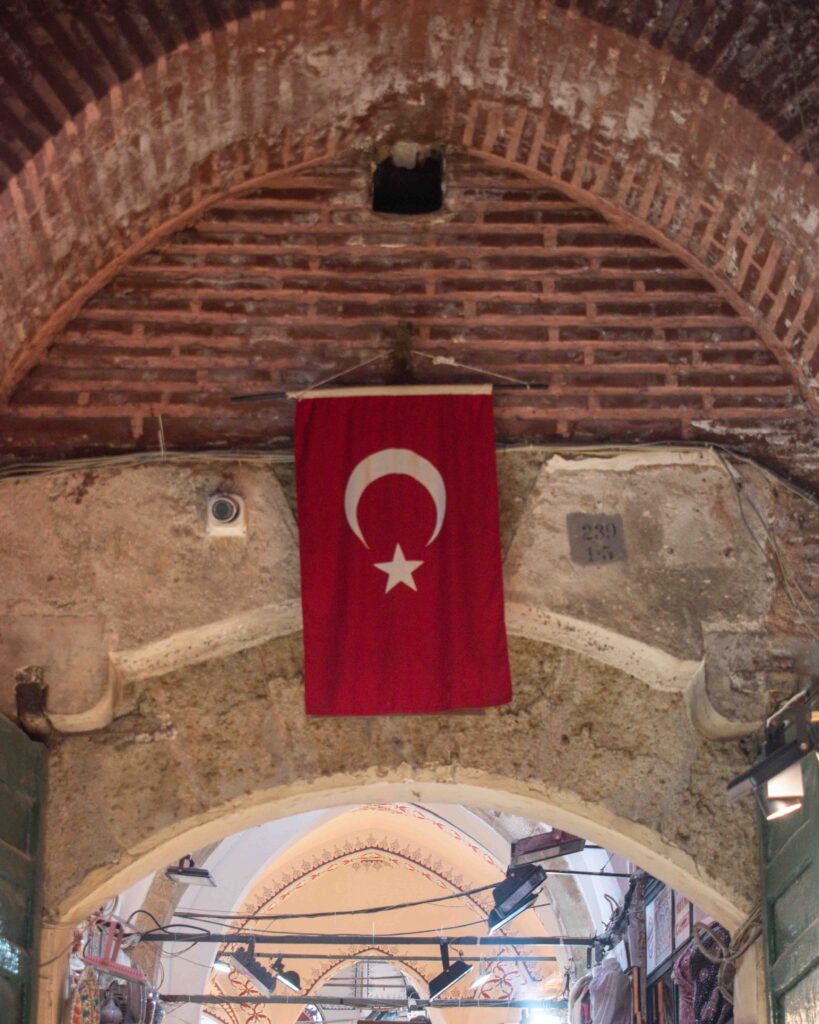
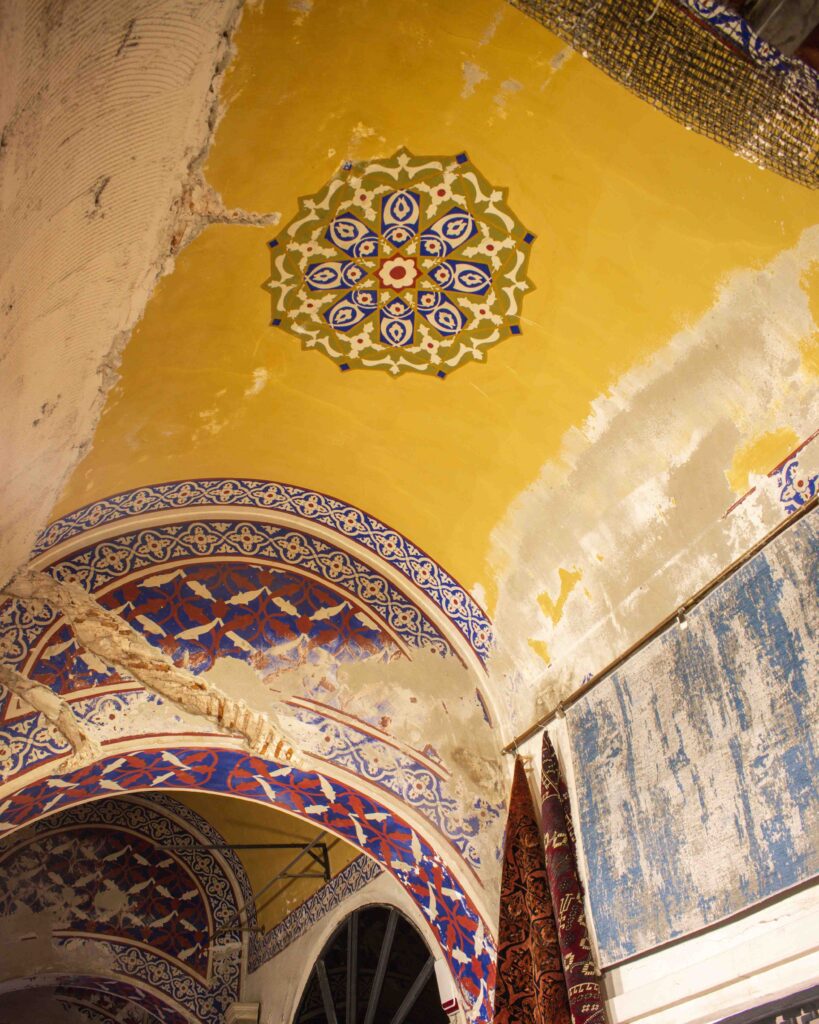
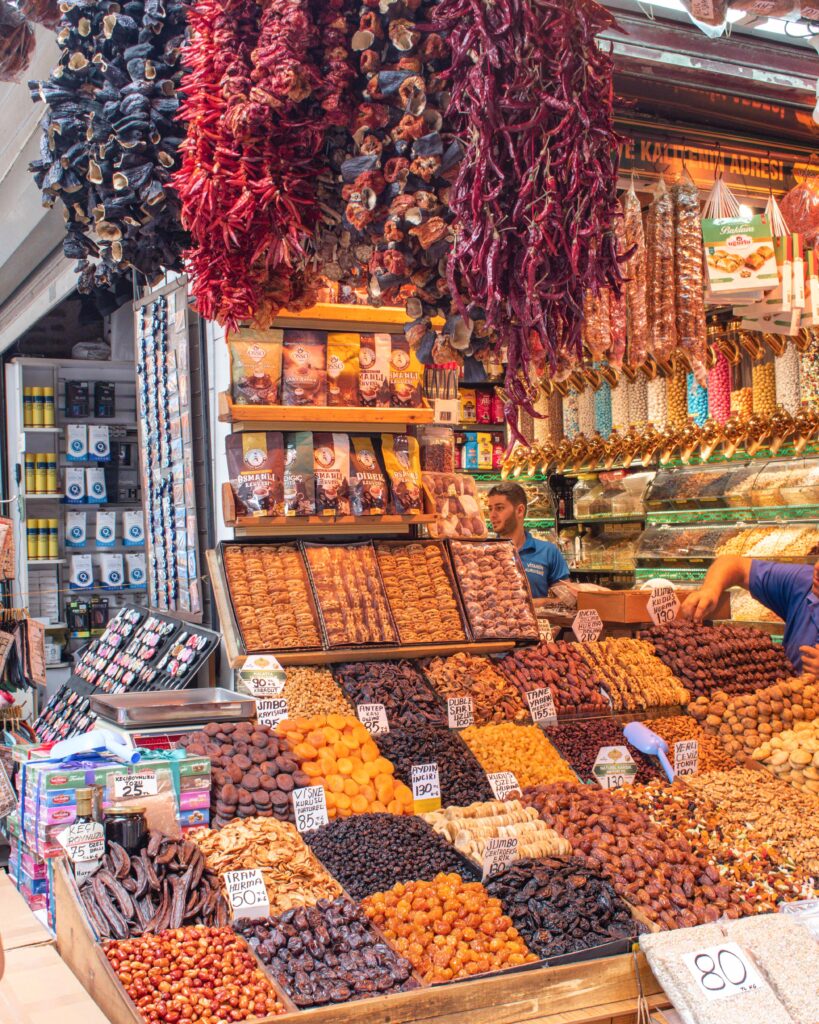
Ease weary limbs at a hamman – a hammam is a traditional bath that has been around since Roman times. It is one my favourite pampering treats! To start with, you will be rinsed in water, before lying out on a heated marble platform to relax. Next up, the masseuse will give you a (very!) vigorous wash with black soap and a special rough glove to remove dead skin cells. After a rinse in very cold water, you finish up with a relaxing soapy bubble wash.
Hammams do not allow women and men to share facilities. Some Istanbul hammams have seperate sections, while others have different opening hours for women and men. Women are typically topless during the hammam, and both men and women will be given a light towel to wrap below your waist. Hammams are communal, meaning you will not be in a private room. If you want to experience a more exclusive hammam experience with a small group or someone of the opposite sex, you need to book a private hammam.
Turkish baths are found all over Istanbul, but I would really recommend doing your research and visiting a well-reviewed place. In the city’s more touristy areas, there are countless outlets marketing their spa services as you walk around. However, many are overpriced for distinctly average, touristy offerings. If you are looking for something authentic and historic, consider Cagaloglu Haman. It is one of the oldest Turkish baths in the world, with over 300 years of continuous business. Hammam services start at €60.
Feel the energy of the Whirling Dervishes – the Mevlevi order is an Islamic religious order based in Konya, central Turkey. It was founded by a 13thC Sufi mystic. Most people, however, will know them as the Whirling Dervishes, named because of their ritual dance during worshipping ceremonies. Known as the Mevlevi Sema ceremony, five members of the congregation spin rhythmically in circles to the melodic hymns performed by a live band. Ceremonies traditionally take place in a Mevlevihane, a hall designed specifically for the Whirling Dervishes.
Visitors are welcome to attend the Silivrikapı Mevlana Cultural Center, every Thursday evening to watch a Sema Ceremony and take part in a Q&A session. The ceremony runs from 7.30pm to 11pm.
GET OUTDOORS
Have a picnic in Gülhane Park – a lovely green space in the Eminönü district near to Topkapı Palace. Unsurprisingly in a city stuffed with visible reminders of the past, Gülhane Park also has its own place in Türkiye’s history. In 1839, this was where the Edict of Gülhane was announced. This started the reforms of the Ottoman Empire, which proclaimed all citizens, regardless of religion, were equal in law.
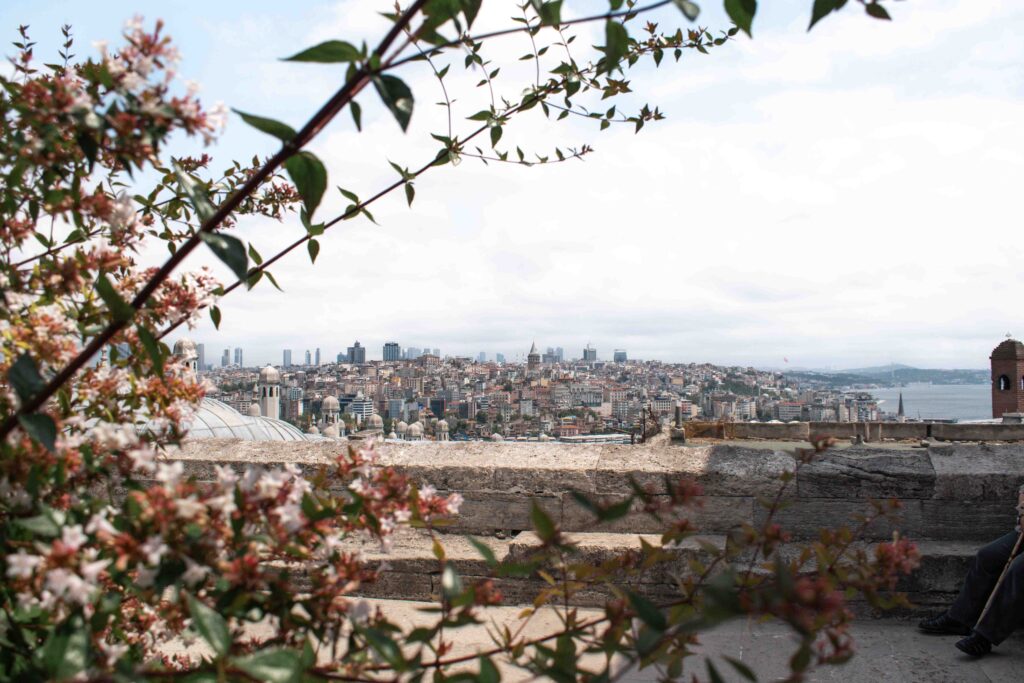
Head up Pierre Loti Hill – from Eyup Sultan Mosque, either walk up the hill through the cemetary or take the cable car (which you can pay for with your Istanbulkart). The viewpoint looks right out across the Golden Horn, giving panoramic views over Istanbul. There is a lovely café at the top, with tables overlooking the view.
Enjoy the views from Otağtepe Park – amazing views over the Bosphorus, with lots of paths to explore and many picnic areas. Find it on signs by its official name, Fatih Korusu.
WHERE TO EAT
I love Turkish food – if you have read my guide to where to eat in Muscat you will know Turkish House is one of our favourite weekend brunch spots. And Istanbul is a real foodie destination. The food scene is reflective of the diverse cultures and peoples that call this city home. Budget street eats sit alongside uber expensive bars serving inventive cocktails. And you can just as easily find traditional Turkish cuisine unchanged for generations, as contemporary restaurants offering fusions of familiar Turkish ingredients with flavours from around the world. One of the greatest challenges on a short trip to Istanbul is narrowing down where to eat amongst all the amazing options! Check out my guide to my favourite places to eat in Istanbul for a more comprehensive list, but here are a few of my top highlights for a short visit.
Akin Balik – ever more popular and well known, this lovely fish and seafood restaurant offers a shady lunch spot almost on top of the river, which is then strewn with fairy lights at night. Many visitors head to the seafood places actually on Galata Bridge, but I’d recommend skipping their higher prices and come here for great quality at more affordable rates.
Osman Kebab – I enjoyed the very juicy wood fired doner kebabs and The Husband seriously rated the mixed grill. Evidently a local favourite and always busy. Don’t be put off if all of the tables seem to be full – they will simply lay out another on the street.
Şehzade Cağ Kebap – bustling kebab shop on corner of market, some indoor seating but mostly spilled out across the street. Very simple menu – you get two cag kebabs, and choice of three salads and a yoghurt dip. Very cheap, very good, very friendly. Simple, straightforward and delicious. Thin slivers of marinated lamb on wooden handled metal skewers. As simple as you can imagine, but super tasty.
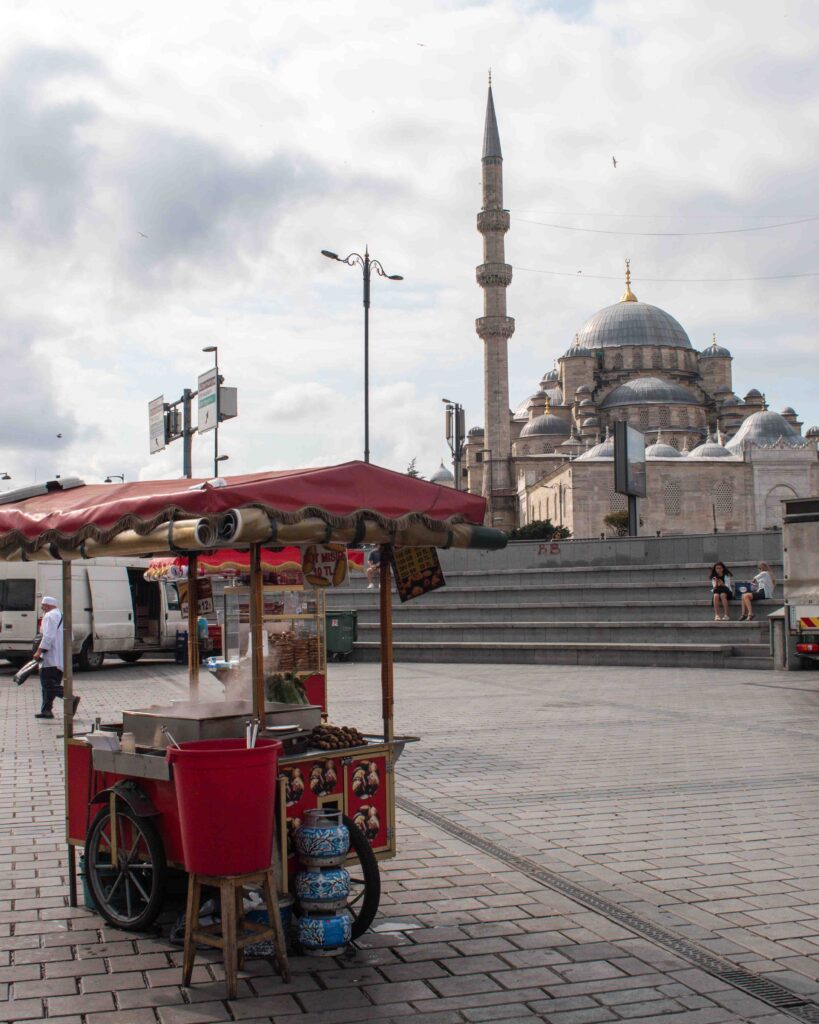
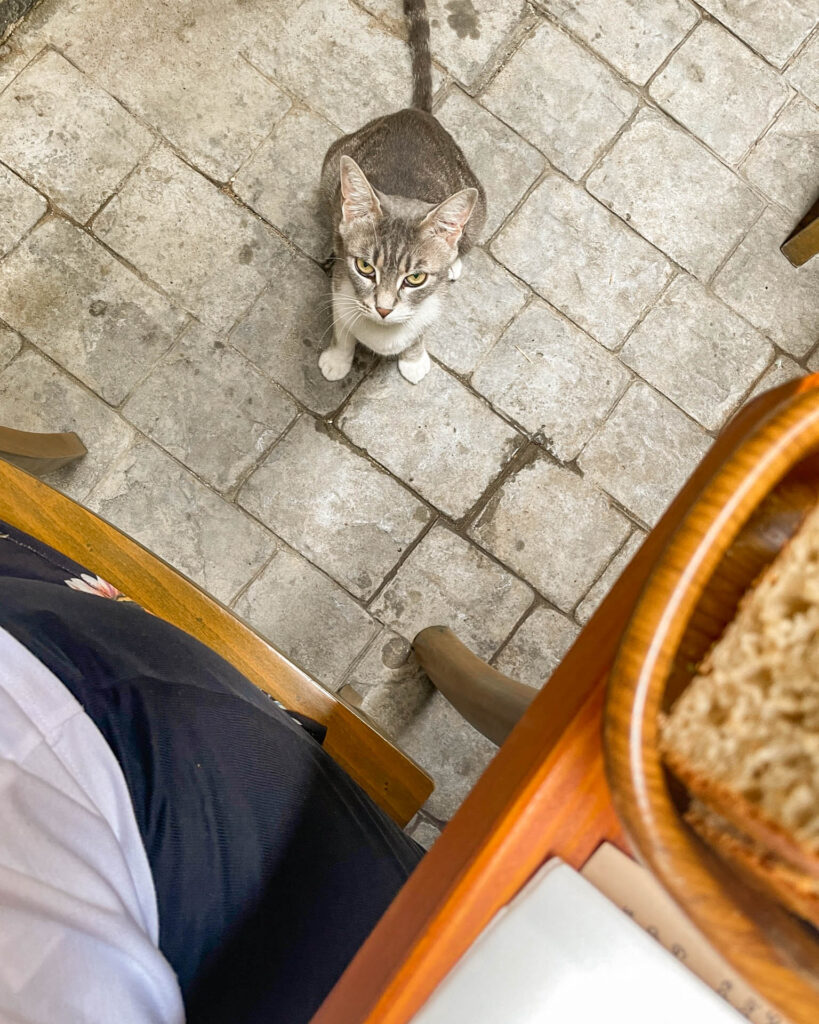
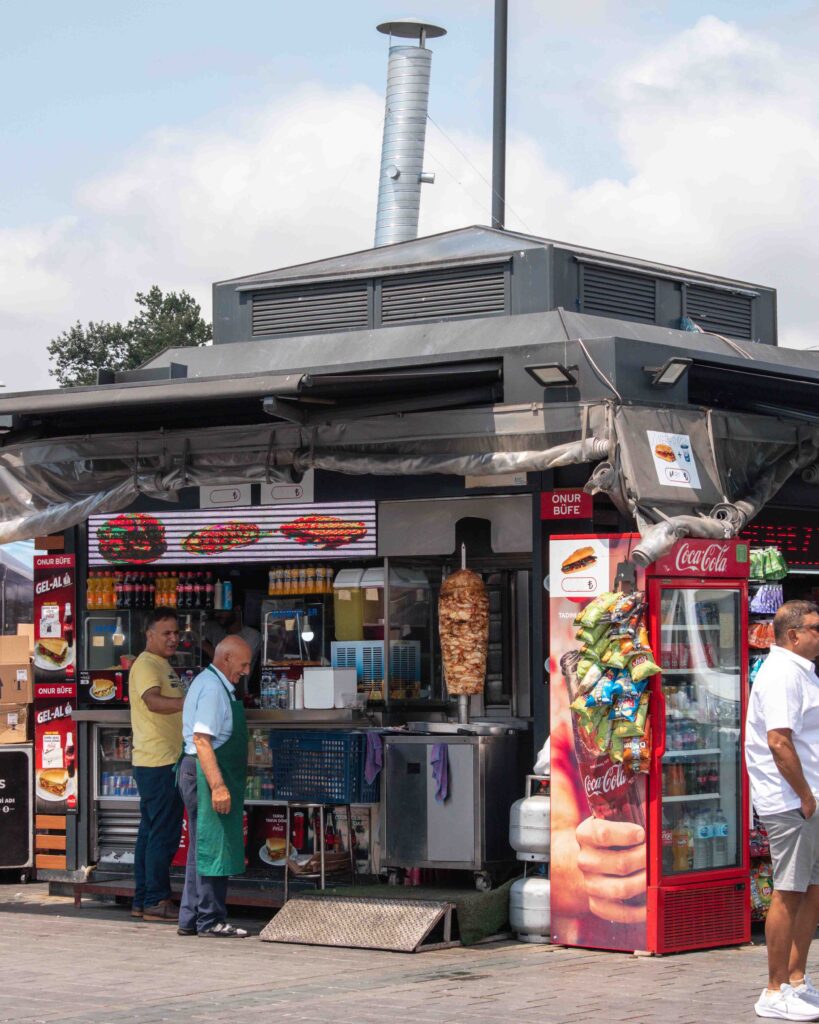
Privato Cafe – not an original pick, you will find this café in Galata on almost every single list of places to eat in Istanbul. But it entirely deserves its fame as the jams, eggs, cheeses and other breakfast delights are simply superb. Be sure to only order one breakfasts to share between two. I simply cannot emphasise this advice enough, the portions are humungous! Just as we thought we were finished, a entire second tray of delicious plates was brought out to us. The vibe is an irresistible blend of hipster meets authentic retro cafe. Try to snag a table outside in the summer.
Aheste – for date night or something a bit more special. The £30 Meze tasting menu is superb value given the quality. This is fine dining and service to match. Quite big portions for the “construct your own” menu. The inventive calamaraki was the clear winner for The Husband, whilst I loved the seabass ceviche with yuzu.
Sayla Manti – small unassuming, canteen style on the Asian side of the river serving really delicious little Manti – and they really are tiny. I stated to think they must have been rolled by mice to get them that petite. The menu sticks to what they do best: other than two types of manti, they serve flat borek, filled with either ground meat or cheeses.
Karaköy Güllüoğlu – if the great Anthony Bourdain declared this to be the best baklava in Istanbul, I am not going to argue. There are many, many varieties to choose from – including gluten free. Get a selection to wash down with a glass of çay and watch the world go by. Same day delivery within Istanbul if you are too tired to venture out after a day’s sightseeing!
WHERE TO SLEEP
Istanbul is a huge city, and choosing which area to stay in can be complicated as each neighbourhood has such distinct, different vibes. For a very short visit I recommend staying in Sultanhamet to be closest to all the “top” sights. For a slightly longer trip consider Eminönü, and if you are lucky enough to be staying a bit looker check out Karaköy. I’d recommend avoiding İstiklal Caddesi as it can be very noisy late at night.
Mest Hotel Istanbul Sirkeci – fantastic location only minutes from a ferry terminal, a 15 minute walk to Hagia Sofia and Topkapi Palace, and 15 minutes across Galata Bridge to the cafe, bars and restaurants of Karaköy. It is almost on top of the spice market, but somehow still quiet. Some rooms with small terrace directly out onto mosque. The breakfast room has amazing views directly down onto Yeni Cami Mosque – as do the terraces of some of the rooms.
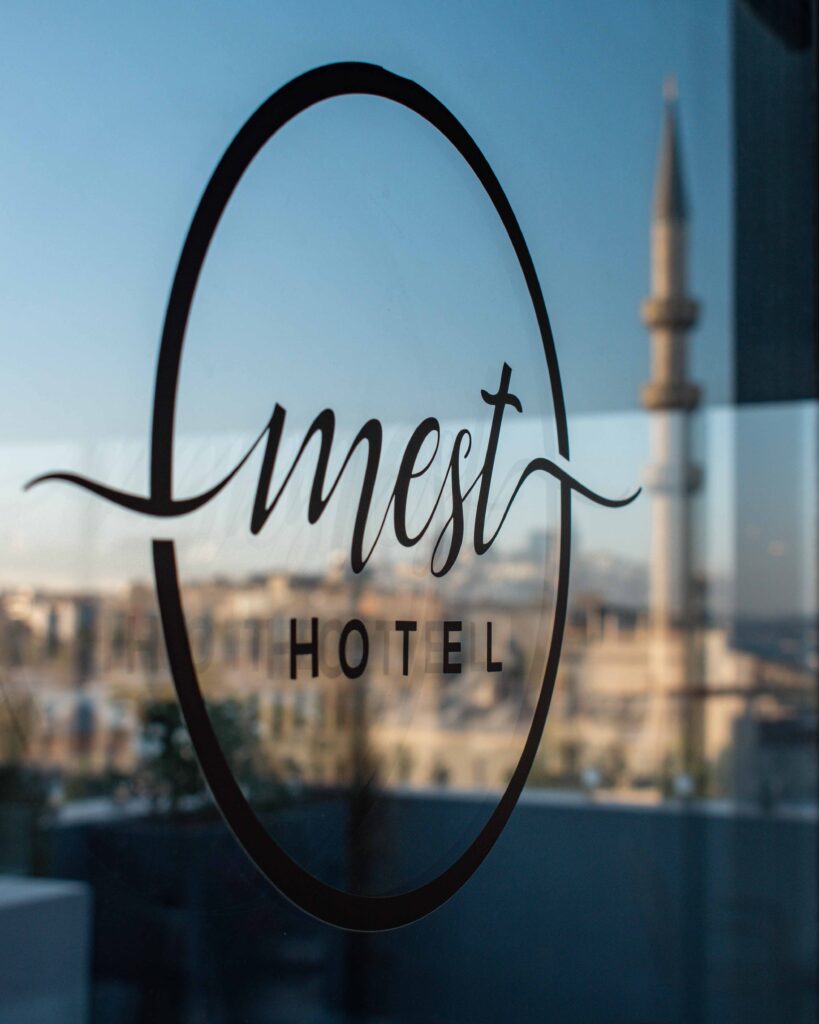
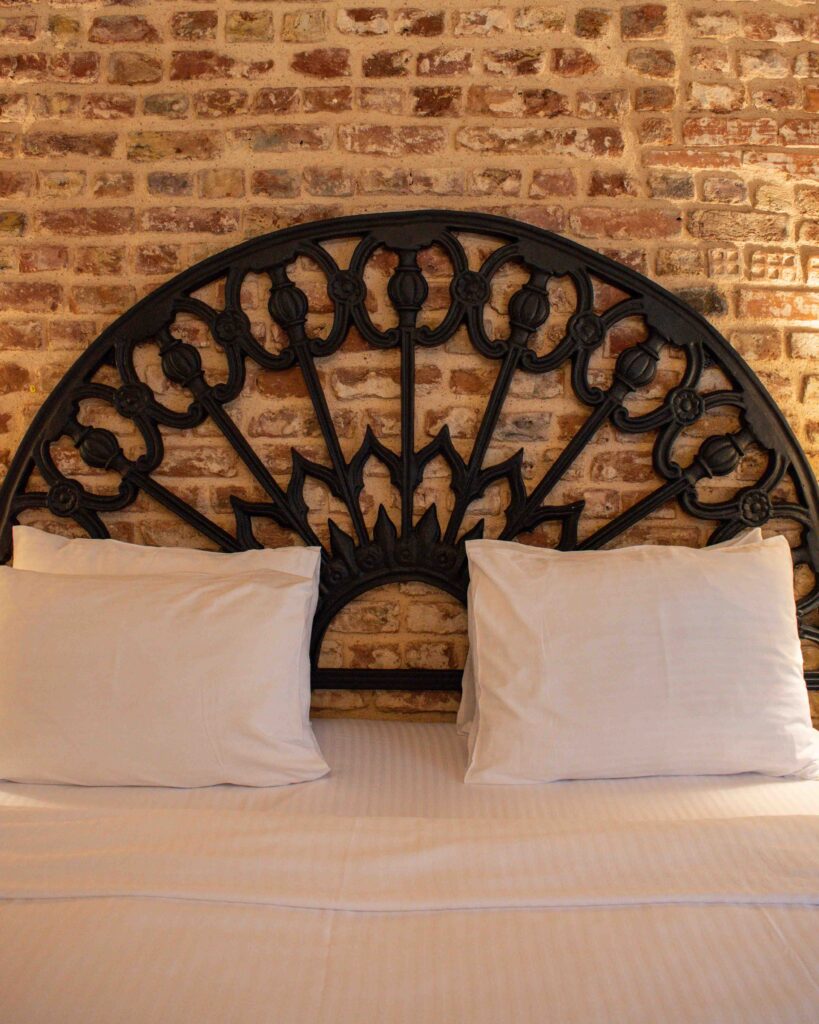
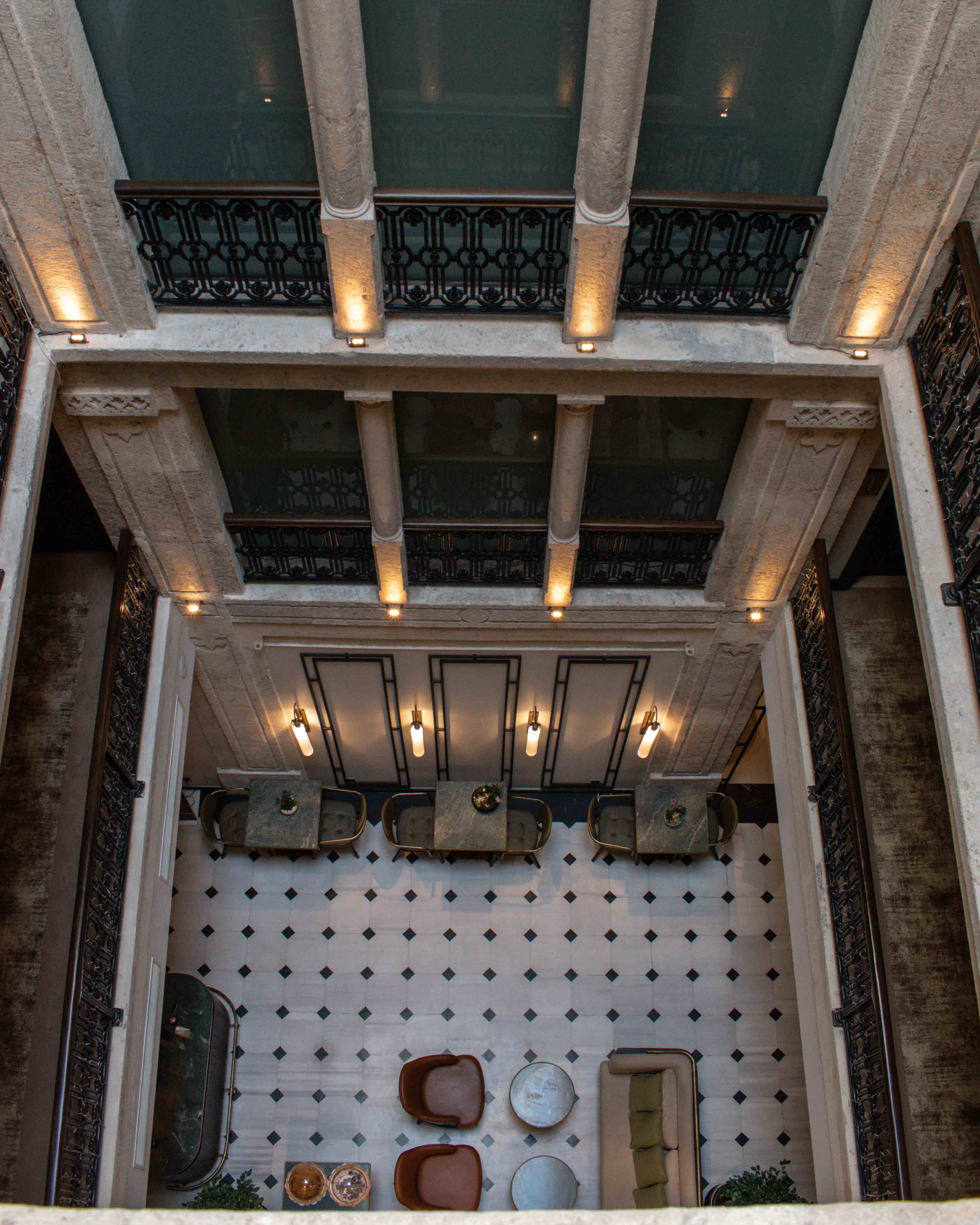
Hotel Ibrahim Pasha – family run hotel with friendly service. Gorgeous rooftop terrace with views of the Blue Mosque. Easy walk to most of the Old City sights, on a quiet street.
Hotel Miniature – stylish, modern boutique hotel in walking distance to the most popular tourist sights. Think exposed brick work and polished wood. Great breakfast and very friendly service.
Hotel Celine – small boutique hotel a short walk to Hagia Sophia and the Blue Mosque. Comfortable spacious rooms and an excellent breakfast.
Have a look at my other guides to Turkey if you are planning a trip, as well as other Middle Eastern destinations.




Leave a Reply